

“Now that I’m no longer confined by illness, I can blossom.”






“Now that I’m no longer confined by illness, I can blossom.”




It's my pleasure to introduce Believe, a new magazine from Children’s National Hospital Foundation. Believe will share stories about the lifesaving and lifechanging care you make possible.
We’re honored to feature patients, care providers, groundbreaking research and the vital philanthropic partnerships that enable us to improve children’s health in the Washington, D.C., area community and around the world.
In this issue, the hospital’s follow the leader campaign to transform pediatric medicine serves as our guide. I can think of no better way to look behind the scenes at Children’s National than through the journeys of our extraordinary pediatric leaders and our future leaders who receive care.
I’m inspired by their words, but even more by their heart and determination.
“ Philanthropy lets you dream and have those dreams come true.”— Dr. Mark Batshaw Senior Investigator, Center for Genetic Medicine Research
They remind us, in the face of challenges, that children are resilient, and life is full of possibility and surprises. “We should never give up on trying to get sick kids better. There’s no limit to what we can do,” says Paris, a patient, in our cover story.
What a wonderful surprise it would be to meet or surpass our campaign’s $500 million fundraising goal by our next magazine issue. With your generous support, I believe we can!
Warmest wishes,
DeAnn Aston Marshall, MHA President Children’s National Hospital Foundation
“We should never give up on trying to get sick kids better. There’s no limit to what we can do.”
― Paris, Children’s National patient

EDITORIAL
Jean Bratman
Georganne Coco
Kitson Jazynka
Cathy Madison
Susana Olague
Dan Wilcock
Maura Zehr
PRODUCTION AND DESIGN
Alexandra Bozoghlian
Jennifer Littrell
Rachel Phillips
Allison Chess Ruiz
CONTRIBUTORS
Ali Chope
Leslie Schrader
Morgan Worley
COVER PHOTO
Rebecca Drobis
Children’s National Hospital Foundation works with generous donors to advance the hospital’s mission. Gifts from individuals, corporations, foundations and community organizations fund world-class care and research for kids in the Washington, D.C., region and beyond.

For Believe magazine’s digital experience please visit childrensnational.org/believe or scan the QR code above
ONLINE childrensnational.org/giving FACEBOOK.COM/Childrens.national TWITTER.COM/ChildrensNatl INSTAGRAM.COM/childrensnational LINKEDIN.COM/company/ childrens-hospital-foundation
For years, a serious illness sidelined Paris’ dreams. She reclaimed them after she met our Chief of Colorectal & Pelvic Reconstruction, Dr. Marc Levitt, and finally received the care she needed.


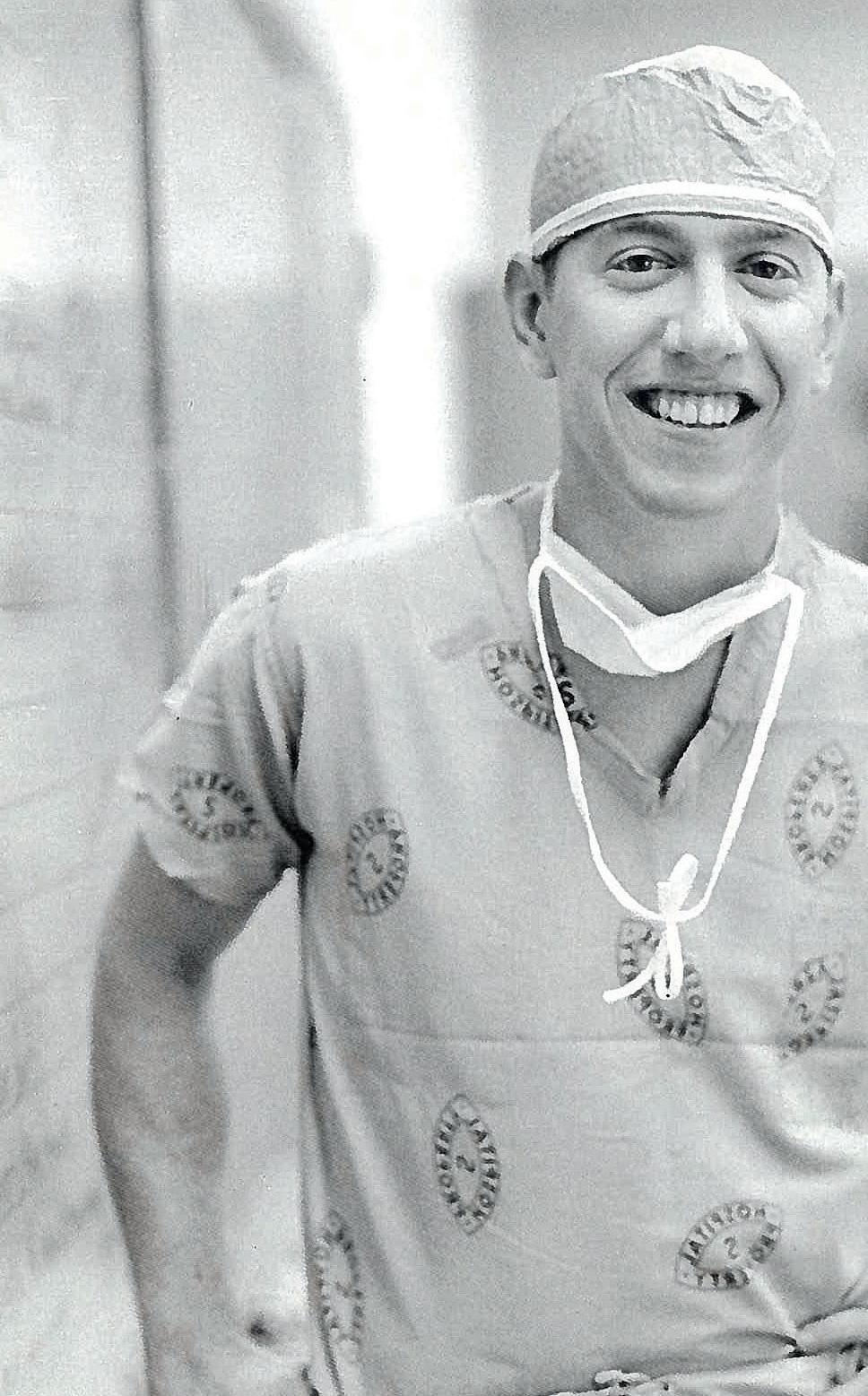



Children’s

16 follow the leader. Leading the Charge for Diversity, Equity & Inclusion
Dr. Denice Cora-Bramble, the hospital’s firstever Chief Diversity Officer, discusses her new role, the leadership model she believes in and why mentorship is so important.
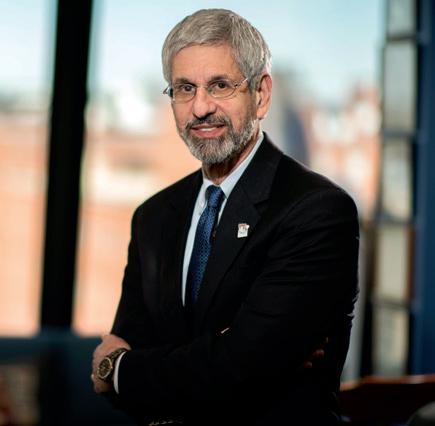
Don’t Give Up
As a child, Mark Batshaw struggled with ADHD and learning disabilities. Today, Dr. Batshaw is a world-renowned pediatric scientist at Children’s National. He reflects on his legacy and the power of philanthropy to change lives.
MEET THE MOMENT
Strong Nurses, Strong Community Caring for Our Care Providers
The COVID-19 pandemic required us all to step up in new ways. 18 GROWN STRONGER
A World of Opportunities for Michael
We check in with a patient about how exceptional care leads to future successes.
POWER CARE THROUGH
Believing in a Healthy City for Every Child
UnitedHeath Group helps our Mobile Health Program reach more kids.
Inspiring Others to follow the leader.
A church fundraiser benefits Children’s National patients
35 Children's Ball 2022
View photos of our spectacular gala to celebrate the future of children’s health.
Painting a New World
A patient ’s art brightens the hospital gallery and his own life during the pandemic.
Achieving Peak Performance
Our Fight For Children Sports Medicine Center is a game changer for young athletes. 38 Go the Distance for Kids
Get ready for the Race for Every Child: 10th Anniversary Edition!
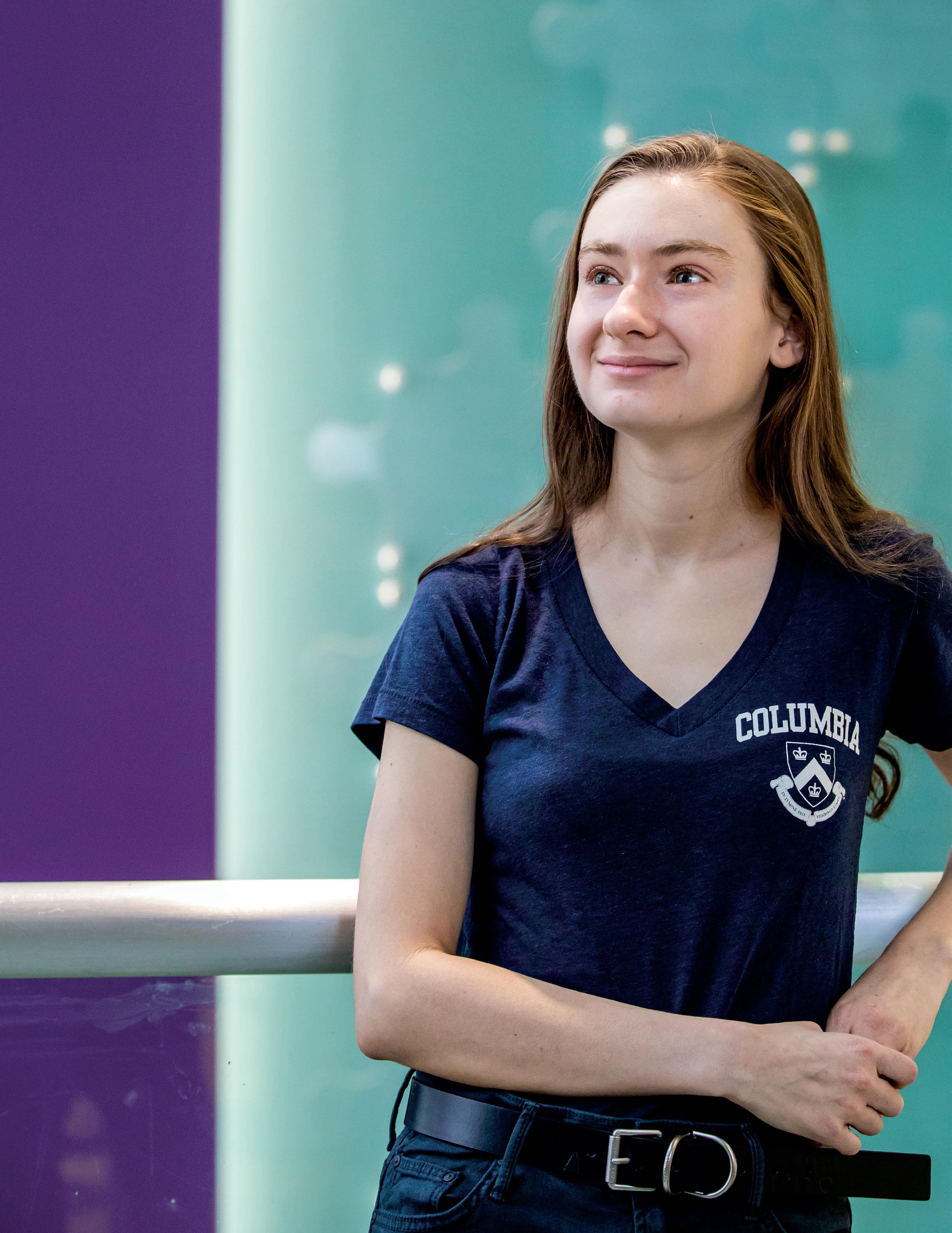
As a kid, Paris dreamed of being a teacher. She loved learning, school, art and exploring Central Park with her family near their home in New York City. However, a serious gastrointestinal illness sidelined her plans. During Paris’ first year of college, she took medical leave that would last three years and keep her mostly confined to her bedroom.
Children’s National Hospital helps young patients like Paris face, manage and overcome complex medical conditions. Our new Division of Colorectal & Pelvic Reconstruction, led by Dr. Marc Levitt, the world’s most experienced surgeon in this specialty, is accelerating advances in care by integrating colorectal, urology, gynecology and gastroenterology to save and improve lives. Paris, now 23, shares how this care enabled her to leave behind her illness and get back to doing what she loves.

“My gastrointestinal problems got really bad when I was in high school. I spent my days running home in between classes to go to the bathroom. My family and I met with doctor after doctor to figure out what was wrong. Some suggested I had an eating disorder, a parasite or irritable bowel syndrome. Nutritionists prescribed unusual diets. A physical therapist suggested massage. They all seemed to think the problem was in my head. Nothing helped.
I wanted to be someone who spread joy and contributed to the world. But each passing year of illness chipped away at my soul. My illness and hopelessness brought down my whole family.
One day, my mom ran into a friend at a grocery store. Her daughter had experienced serious problems like mine. She recommended Dr. Marc Levitt at Children’s National in Washington, D.C. He recognized my symptoms and immediately offered a solution. He listened to everything I had to say and made me a part of the decision-making process.
It seemed like everyone at Children’s National wanted me to feel better. No one would give up. The day in 2020 that Dr. Levitt removed my colon was the best day of my life. I felt like I won the lottery. Everyone in my family thinks of him as an angel.
It’s hard to believe I feel as good as I do now, after being sick for five years. Things feel a lot lighter in our home. I can join family walks again. I can try whatever food, whenever I want, without worry or pain. I’m back to school and rediscovering big dreams and goals, like being a teacher. Some days I think I’d like to be a screenwriter, doctor or art curator. Life feels limitless!

Hope is the greatest gift that care at Children’s National gave me. Now that I’m no longer confined by illness, I can blossom.”
— Paris
Dr. Levitt is passionate about improving life for all children, teens and young adults with colorectal issues. He has an important vision to expand this kind of care so that more kids can have transformations like mine without wasting time. His multidisciplinary, one-stop-shop approach meant my family and I could stop being soldiers in trying to figure out my problems. Once I got to Children’s National, all I had to do was focus on healing.
The novelty and excitement about my surgery still haven’t worn off. Dr. Levitt freed me to focus on loving life. He understands that when you’re talking about sick children and their ability to recover and contribute to the world, the possibilities are endless. We should never give up on trying to get sick kids better. There’s no limit to what we can do.”

Our family waged a long battle against a disease that eluded many doctors. Dr. Marc Levitt brought our daughter, Paris, a diagnosis. He also brought empathy, hope and a plan for healing ― all in our first telemedicine appointment.
That visit happened at the start of the pandemic. Dr. Levitt, along with Dr. Anil Darbari, Director of the Comprehensive Gastrointestinal Motility Center and a team of nurses, physician assistants and schedulers, attended the meeting with incomparable expertise and an overwhelming level of humanity and compassion.
In that first visit, we accomplished something that had seemed
impossible: an efficient and stressfree path to wellness for Paris. It felt as if the job of healing her was no longer in my hands alone. Constant communication via email gave us tremendous peace of mind. In five months, this surgery resolved the debilitating digestive issues Paris had for years.
Her newfound health transformed our whole family. We laugh instead of cry. We talk about her future. She can visit with her grandparents, try new foods and participate in spontaneous activities. Paris hasn’t been able to engage in life like this for many years. We are forever grateful to Dr. Levitt and the entire team at Children’s National.
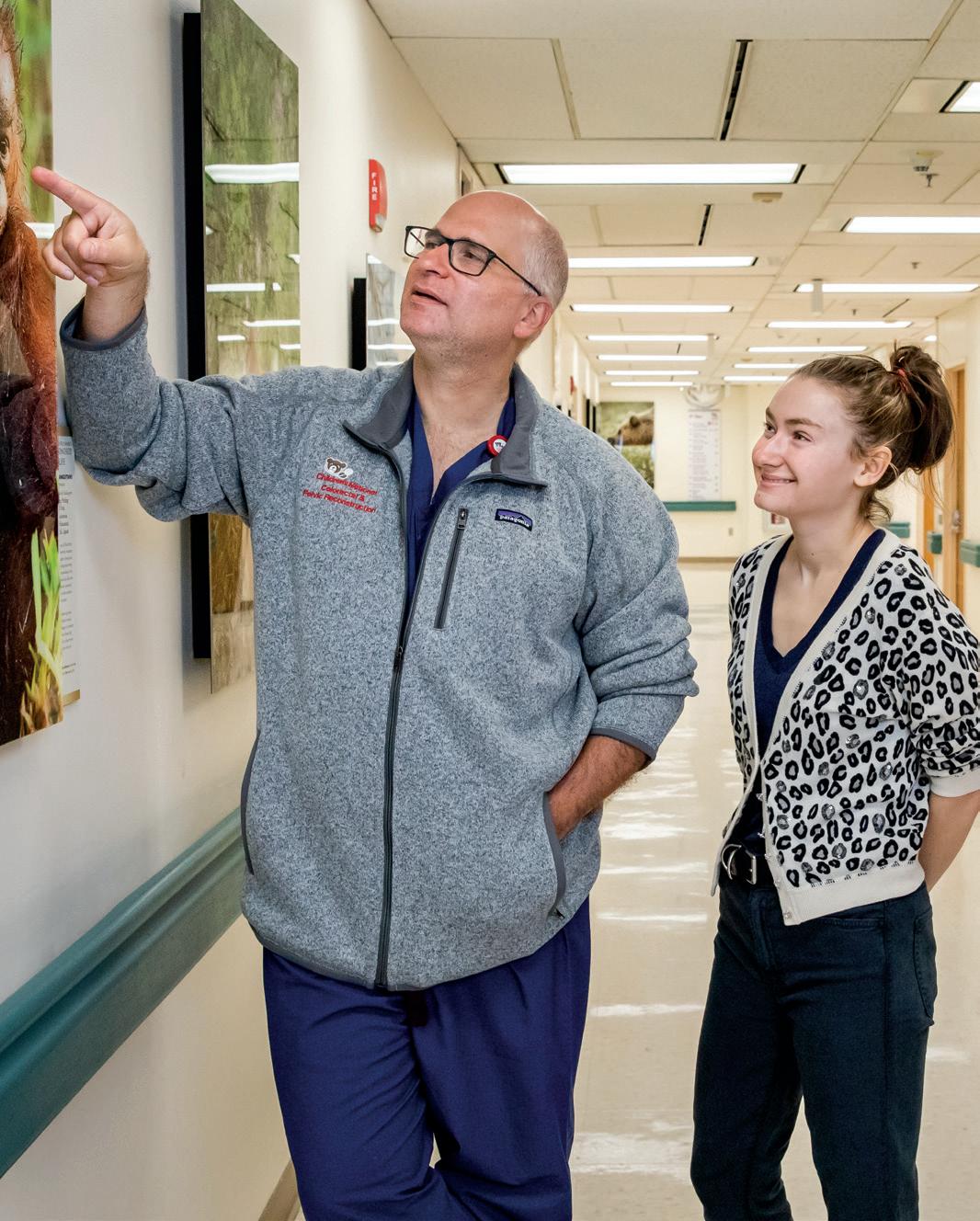
Marc Levitt wanted to be a surgeon when he grew up. As a medical student, he loved the idea of pediatric surgery because it involved building relationships with families. “Within the colorectal specialty, you might meet a newborn to fix a problem, meet them again as a 1-year-old, again as an older child, then maybe again when a young girl becomes a woman and is ready to have a baby.
It can be a 25-year commitment to a patient,” says Dr. Levitt, a world-leading pediatric colorectal surgeon at Children’s National. He has performed about 15,000 colon and rectal surgeries for children — more than any other practicing surgeon.
Dr. Levitt has a vision for his patients: They should live like regular kids. “Most of us take our colorectal systems for granted, but there are children who struggle on a daily basis,” he says. “This field is all about quality of life. If we can get a patient here, we can get them better.”
By Nina, Paris’ mom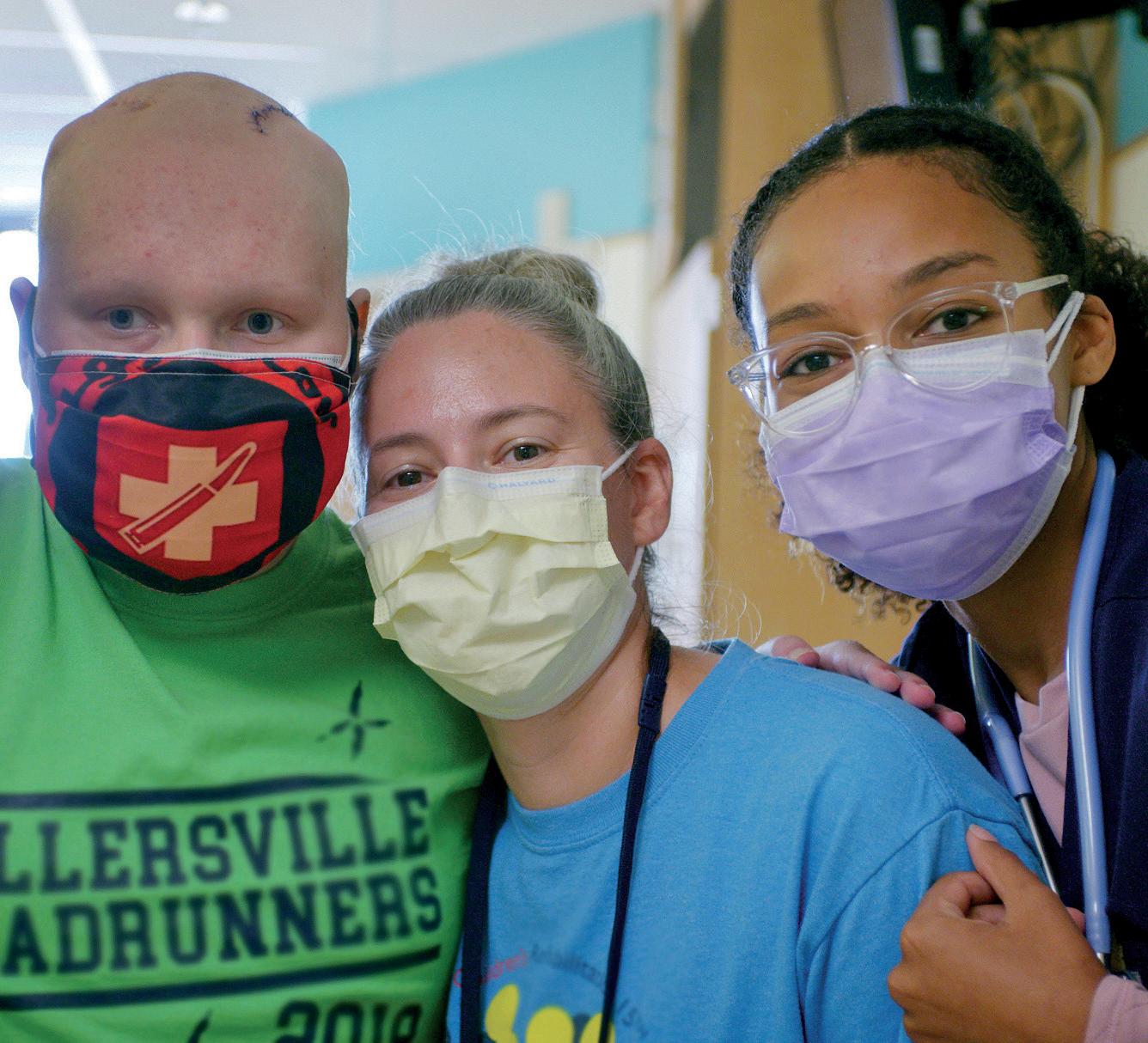
Children’s National nurses feel the pulse of pediatric health across our region. At the height of the COVID-19 pandemic, the signal grew fainter. Families were skipping well-child visits and routine vaccinations. Teresa Graves, MSN, R.N., our Nurse Manager for Community Pediatric Health, saw the need for action to avoid a cascade of health problems for kids.
Graves teamed up with the hospital’s Mobile Health Program. They drove a van to neighborhoods in the community and offered walk-up appointments for families concerned about the risk of visiting indoor spaces. “I think nurses at Children’s National have really stepped up and demonstrated resiliency during COVID,” Graves says.
A national shortage of health care providers is putting their resiliency to the test. Almost three-quarters of America’s hospitals reported losing between 5% and 30% of their nursing staff in 2021, according to the media outlet, Fierce Healthcare. Experts anticipate that workforce challenges will persist beyond the pandemic.
“The pandemic added new pressures to the existing nursing shortage,” says Linda Talley, M.S., BSN, R.N., NE-BC, FAAN, Senior Vice President & Chief Nursing Officer. “The need for resources to bolster workforce resiliency is much more profound.”
Philanthropic investments in workforce development help Children’s National recruit and retain exceptional nurses. In addition to Graves’ community nursing, she serves as a mentor in the Conway Nursing Pathway Program, established with a gift from William and Joanne Conway.
The Pathway program provides scholarships for aspiring pediatric nurses like Maya Kidane, R.N. Kidane has wasted no time in soaking up lessons from her more experienced peers. “The nurses I had the opportunity to shadow, they were absolutely phenomenal,” Kidane says. “Their passion, their drive, their excitement really motivated me as I transitioned into the bedside nurse that I am now.”
Two years on the pandemic front lines put tremendous strain on our doctors, nurses and hospital staff. Generous support for our Employee Relief Fund helped provide them with emergency childcare, rent and mortgage payments, groceries, out-of-pocket medical costs and even coverage for funerals. Philanthropy funded nourishment in the hospital’s new respite room for nurses and at our busy vaccination clinics. It also supported our Mindful Mentors program that teaches staff how to reduce stress through meditation, art and drumming in our Healing Garden.
“Our employees are our greatest asset,” says Catherine R. Codispoti, MHA, Executive Vice President & Chief People Officer. “They have worked tirelessly to ensure that we deliver outstanding care to our patients and families all the while dealing with competing priorities at home. We are grateful to have been able to ease some of their burdens.”
“The R.N. Respite Room is a peaceful and relaxing space where nurses are able to take a moment to step away from the clinical space, take a deep breath, reset and recharge."
— Hannah Schneider, MSN, R.N., CPN
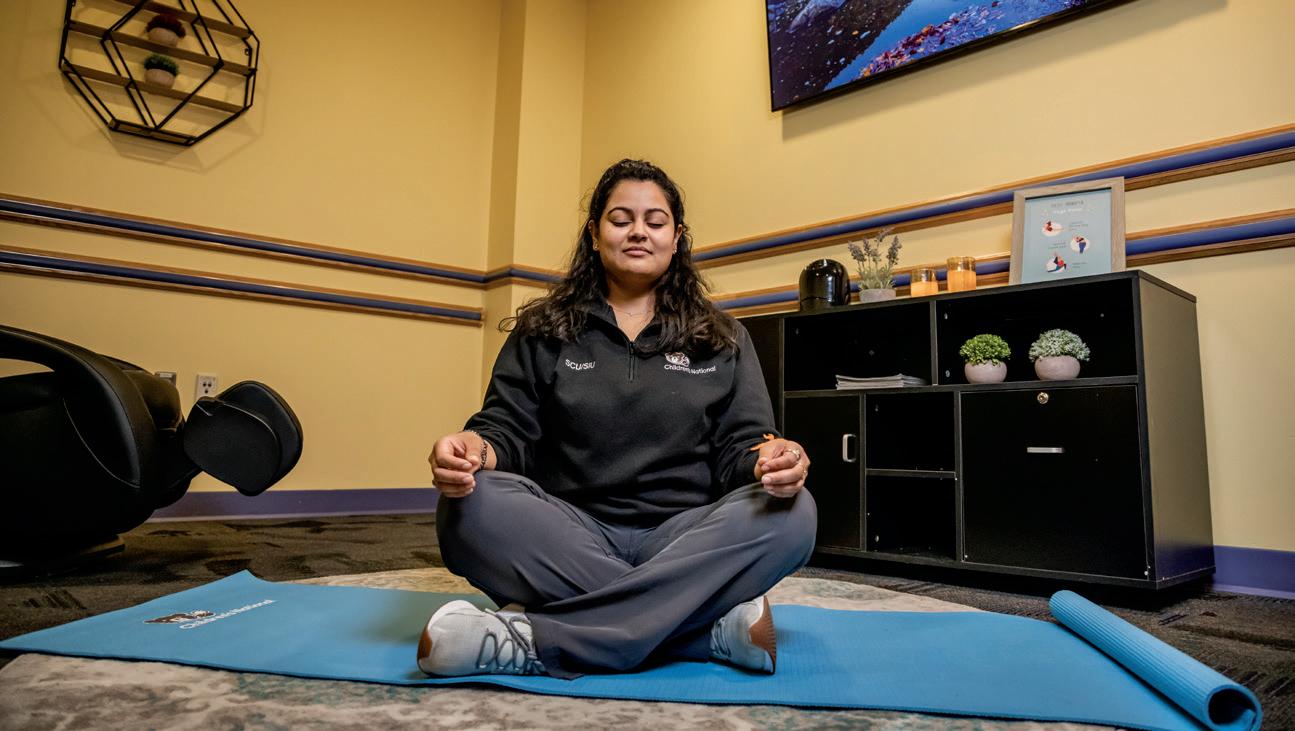
Children’s National nurses find many ways to help patients heal. Families recognize the profound difference their expertise and compassion make.
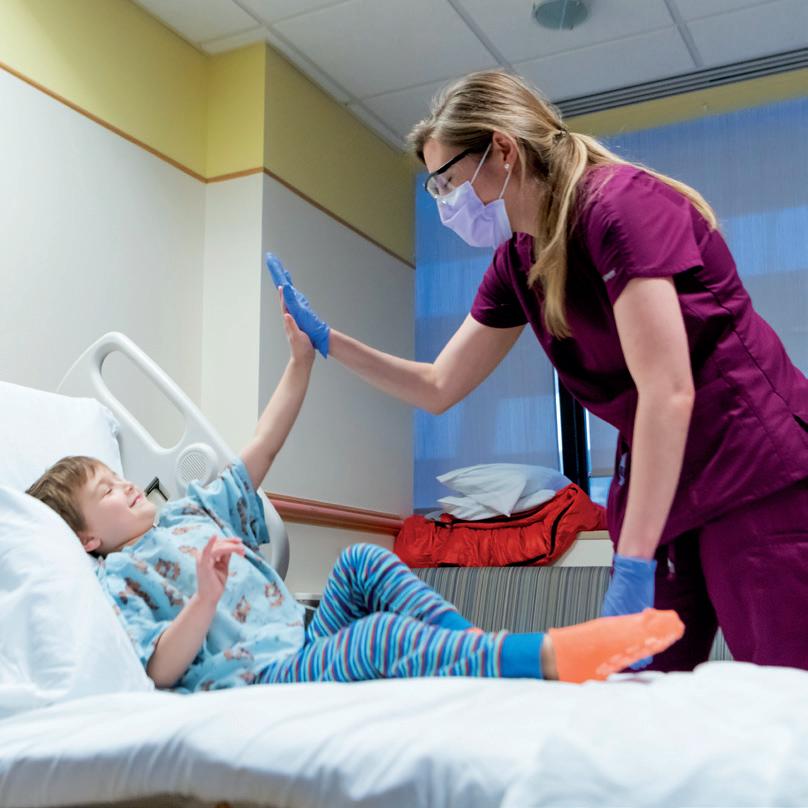
“The care that we received at Children’s National—I can’t even put it into words. Each night, the nurses put a shirt I’d worn in Cannon’s isolette so he could have a piece of me when I left. They didn’t have to do that, but it meant so much.”
Laurie, grateful mom of Cannon, who had open-heart surgery at Children's National at 4
days old
As Barney strolls through the Costco Wholesale Atrium at Children’s National, he inspires joy. Kids touch his warm fur and smile for photos. This favorite front-line worker is a staff facility dog. His training and sweet, steady nature enable him to help sick children feel better and heal faster. Daily hospital rounds involve cuddles and care. On a typical day, Barney might join a speech therapy session and respond to a patient’s requests to “sit” and “stay.” Next, he and his handler, Child Life Specialist Kim Fryer, might encourage an ill child to sit up or get out of bed. He shows up to demonstrate how to take pills and to ease challenging times in our intensive care units.


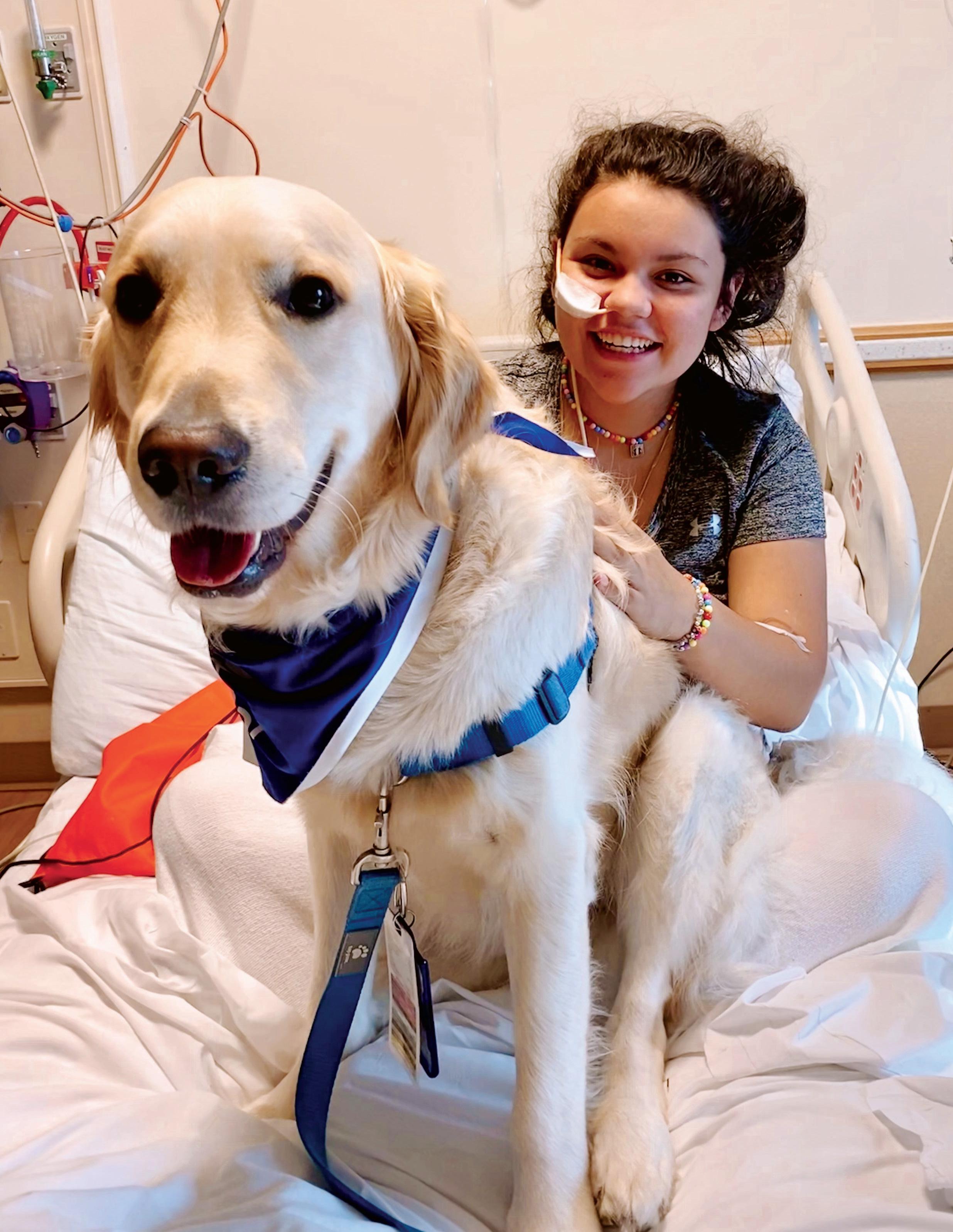
“Philanthropy has enabled us to expand the program. Our facility dog teams provide innovative animal-assisted interventions, pushing past expectations to expand what’s possible for kids.”
― Allison Proctor, Animal Visitation & Therapy CoordinatorBarney builds relationships with kids whose hospitalizations can last weeks or months. “We’ve had a patient come out of anesthesia and ask, ‘Where’s Barney?’” says Allison Proctor, the social worker and animal behavior expert who leads our Animal Visitation and Therapy Program. “Another child walked him around her unit every day during her stay. This helped her meet mobility goals, which meant she went home sooner.”
Canine colleagues include Company, who specializes in connecting with adolescent patients, and a new recruit, Sprout. He will work in the hospital's interactive space for kids to explore media, Seacrest Studios, the radiology department and outpatient clinics. The facility dog program is low-tech and high touch. “For some people, it’s the only time they’re able to let their guard down,” Proctor says. “These dogs are experts in love, compassion and companionship and they give it in abundance.”
“We’ve had a patient come out of anesthesia and ask, ‘Where’s Barney?’”

Golden Retriever | Age 3
Facility Dog
SUPERPOWER: Makes kids feel safe and calm
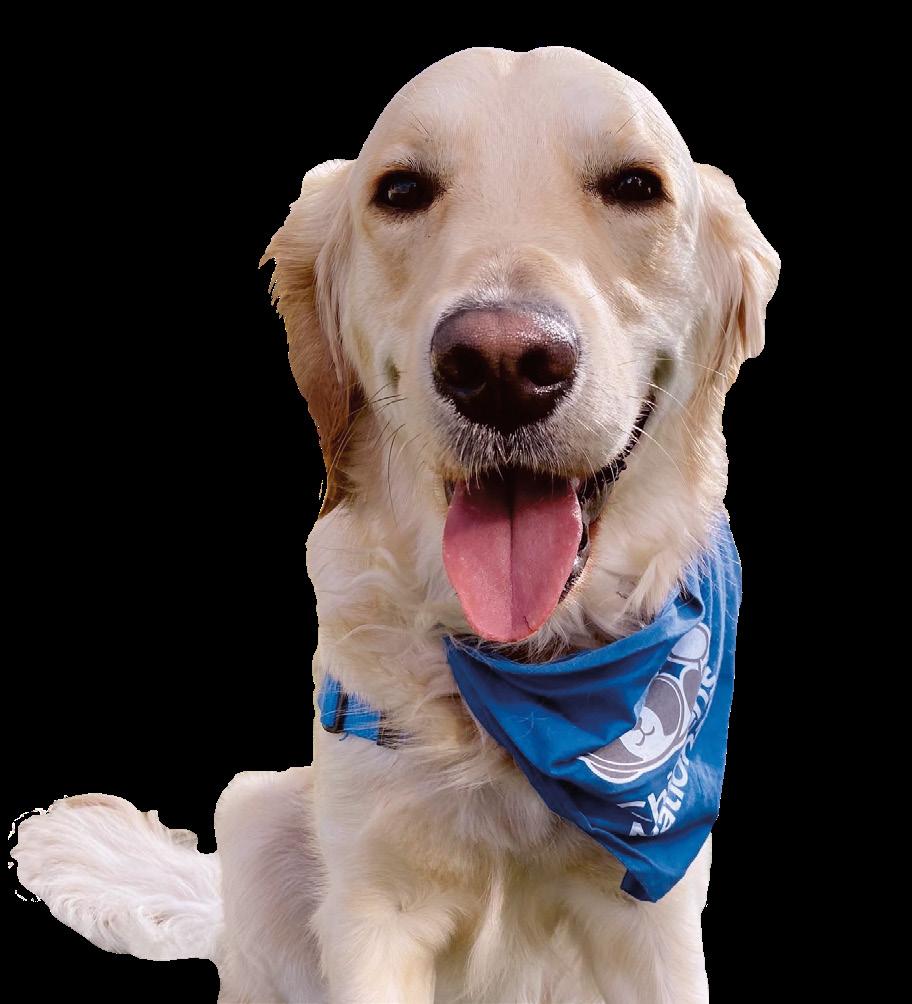
“I felt a lot better after I got to meet Barney. His job is to be sweet and hang out with kids who are sick. He made me feel less afraid.”
― Chloe Children’s National patient
See more photos of our facility dogs childrensnational.org/believe
Golden Retriever | Age 2
Dog
SUPERPOWER:
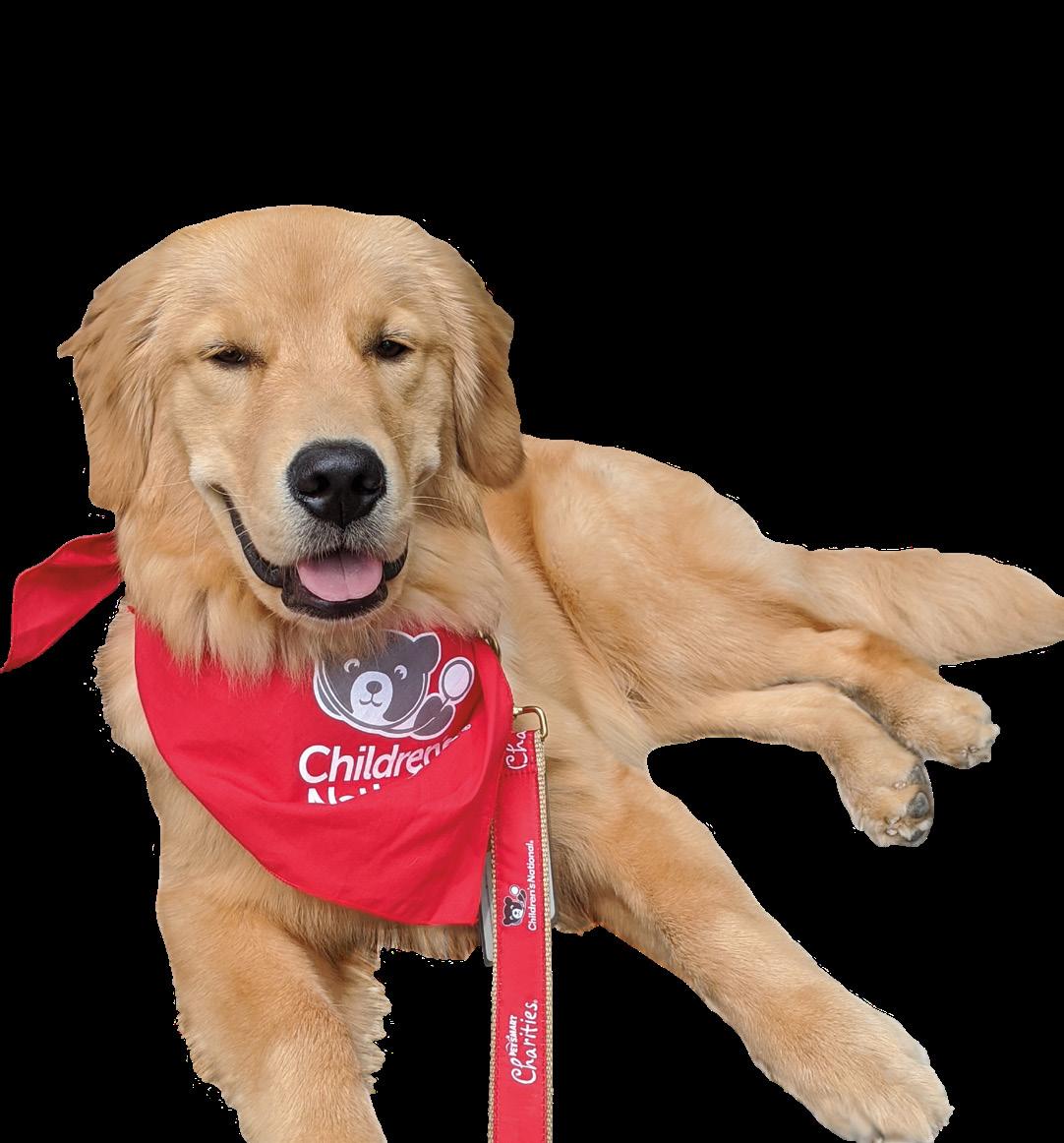
“My shifts are intense. I repair wounds, provide burn care and remove foreign objects from tiny ears and noses. Fifteen minutes of unconditional love from Company is a calming reset. When he arrives, stress levels go down.”
― Tana Massip Emergency Department Trauma Technologist
Labrador Retriever | Age 2
Facility Dog
SUPERPOWER: Makes new friends

“Sprout is an easygoing snuggler who bonds quickly with children, families and staff. Becca Wagner, our Seacrest Studios Media Specialist, is his proud new mom.”
― Allison Proctor Animal Visitation & Therapy Coordinator
I left Puerto Rico at age 16 to begin college at George Washington University in Washington, D.C. I cried the entire first year because I was so homesick,” says Denice Cora-Bramble, M.D., MBA. Today, she is a nationally recognized pediatric leader who continues to blaze trails. In her nearly 20 years at Children’s National, she served as Chief Medical Officer and Executive Vice President of Ambulatory and Community Health Services, the first African American, Afro-Latina and woman to hold that position.
In 2020, Dr. Cora-Bramble brought her expertise and vision to a vital new role: the hospital’s first-ever Chief Diversity Officer. “A servant-leadership style is what I live by,” she says. This leadership model prioritizes community and the contributions, growth and success of others.
Children’s National is making strides in its commitment to improve diversity, equity & inclusion (DEI) at the hospital and for the community it serves. Patient care is at the core of this strategy. Studies show that when providers represent the diversity of their patients and deliver culturally appropriate care, health outcomes improve. Half of our care providers identify as people of color. Among the current class of pediatric residents, 31% identify as “under-
represented in medicine,” which is well above the national average for residency programs.
When Children’s National opened one of the nation’s first pediatric walk-up/drive-through COVID-19 testing sites in March 2020, data published in Pediatrics revealed
how disproportionately the coronavirus affected families of color: 30% of Black children and 46% of Latino children, compared to 7% of White children, tested positive. This did not surprise Dr. Cora-Bramble, based on her understanding as a physician of how many Latino families live. “The lux ury of being able to socially isolate two to three generations

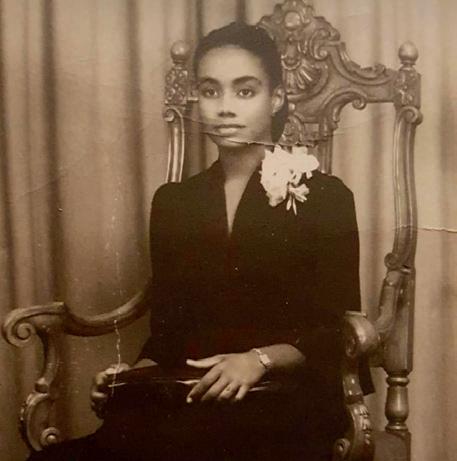
in a two-bedroom apartment is not an option,” she says.
The hospital leads studies to better understand how inequities and obstacles to care impact children’s health. It is exploring issues such as the obesity epidemic in Black children and the link between youth firearm injuries and socioeconomic backgrounds. It is expanding programs for LGBTQ+ families and support systems to connect families with interpretive services, counseling and guidance from parent navigators. “Let’s call the social worker first, not the security guard,” says Dr. Cora-Bramble, referencing a more compassionate approach that responds to patient and family needs.
As a woman of color in a C-suite position, Dr. Cora-Bramble knows there are few road maps in the climb to the top. She is passionate about mentoring future Black and Brown clinicians. As her inspiration, she cites a beloved aunt who was an obstetriciangynecologist in Puerto Rico,
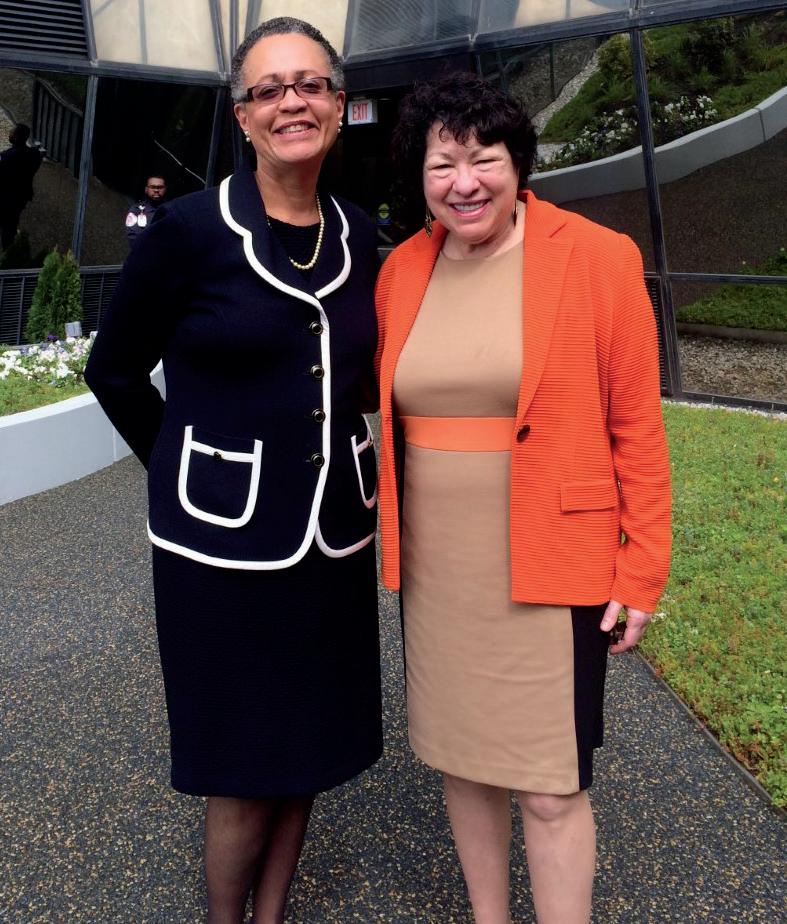
“As a fellow Puerto Rican woman, I was incredibly honored to meet and chat with Justice Sotomayor.”
― Dr. Denice Cora-Bramble
and other family members, including her three adult children, four grandkids and husband of almost 45 years. Like a true servant leader, Dr. Cora-Bramble passes on her life lessons, part of what she calls legacy building, and intends to bring along many others on her journey to advance DEI. She plans to write a memoir. “I was blessed to reach the pinnacle of my career. I can’t leave that story untold. That wouldn’t help the next generation.”

Read more about our DEI efforts childrensnational.org/believe


Afewweeks after Michael’s birth on Valentine’s Day, his mother, Mei, noticed something wasn’t right. When he nursed, he turned slightly blue and couldn’t stay awake for long. Michael’s pediatrician found a heart murmur and immediately connected the family to Children’s National.
The next day, they met with cardiologist Dr. Gerard Martin. He diagnosed Michael with a severe coarctation, which is a narrowing of the aorta. The family decided to forgo the traditional surgery and opt for a less invasive, experimental procedure with a shorter recovery time. When Michael was almost a year old, the doctor inserted a balloon into his aorta to widen the blood vessels and allow his heart to work normally.
“It was such a roller coaster going from a smooth pregnancy and delivery to learning Michael had a life-threatening heart defect,” Mei recalls. “Dr. Martin was wonderful and explained the pros and cons of both approaches. We trusted him.”
Michael’s heart condition caused developmental issues that make it difficult to gain weight. He realized early on that he wasn’t built for contact sports and found his passion in music. The drums were a favorite, leading him to form a rock band,
Half Past Six, with friends in middle school. He played in his high school jazz band and mentored other students. He also loves photography and table tennis.
These days, Michael, who is 20, visits Dr. Martin for yearly checkups. “The nurses and doctors are outstanding and have always treated me like family,” he says. “They put me at ease.”
This fall, he will study international affairs and political science at American University. His dream is to become a diplomat. “I relate well to other people and want to make a difference. I’m grateful to Children’s National for making it possible for me to reach this point and plan for my future.”
Children’s National has been our quiet hero. The experts there gave Michael the chance to live life to the fullest.”
― Mei, Michael ’ s mom
Believing in World-Class Care for Children


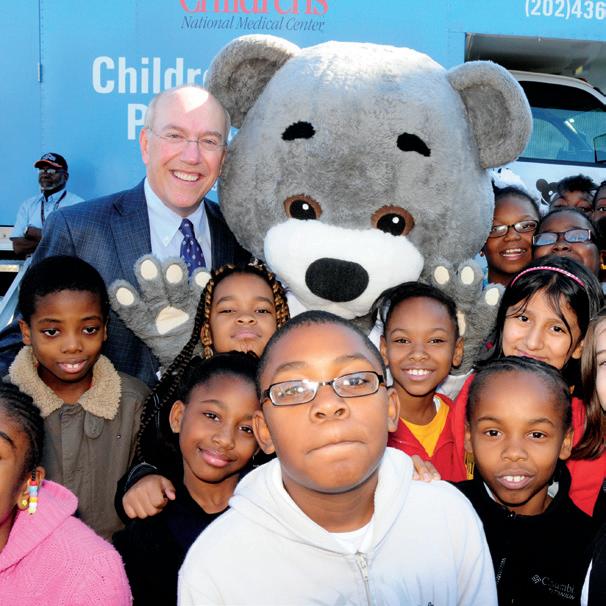
When Kurt Newman, M.D., became President and CEO of Children’s National more than a decade ago, he relocated his office from the quieter executive suites to a busy downstairs corridor. “More people stop by,” he says, “like former patients and staff who want to share something they’re proud of.”
His office has another perk: a back door that leads into the surgery department. “I love to pop in and see the choreography and kindness of everyone working together to make a difference for kids.” Dr. Newman misses his days as a practicing surgeon, but every day he makes a difference on a larger scale. He pays forward his decades of pediatric expertise and leadership to create positive change at the hospital.
Dr. Newman’s deep belief in caring for the whole family and championing innovation has transformed Children’s National from what he believes was a very good community children’s hospital into one that’s world-class. He credits dedicated, compassionate team members and a generous community that believes in the mission and wants to support it.
TYLER’S STORY
“Dr. Newman and his team wrapped us in their care and expertise — from the time I was born and needed emergency surgery and throughout my childhood. They enabled my parents to make the right decisions and get me to where I am today.”
—Tyler, Children’s National patient

“The people who work at Children’s National― from those who park cars to providers who deliver medical care ―are hardworking and empathetic. Our staff’s dedication is palpable. It’s like a heartbeat.”
“There’s no better feeling than having someone tell me that I saved their life 20 years ago and then show me a picture of their own child. This is what it means to build brighter futures.” 2
“Our focus on keeping patients and families, the community and our nearly 8,000 employees safe throughout the COVID-19 pandemic never wavered. Our staff sacrificed and worked harder than ever. I’ve thought a lot about my father along the way and how he must have felt about his service during World War II. I’m sure he put his head down and did what he had to do. It’s too soon for nostalgia about the pandemic, but there is hope. From our pediatric testing center to vaccine clinical trials and caring for sick children, taking in older patients, sharing technology with other hospitals and vaccinating teachers, we helped the community survive. We have also been a national voice of truth in the media about the risks of COVID-19 for kids. I feel a sense of accomplishment and purpose that includes everyone at Children’s National. While many challenges remain, I believe these will be among the proudest moments of our lives.”

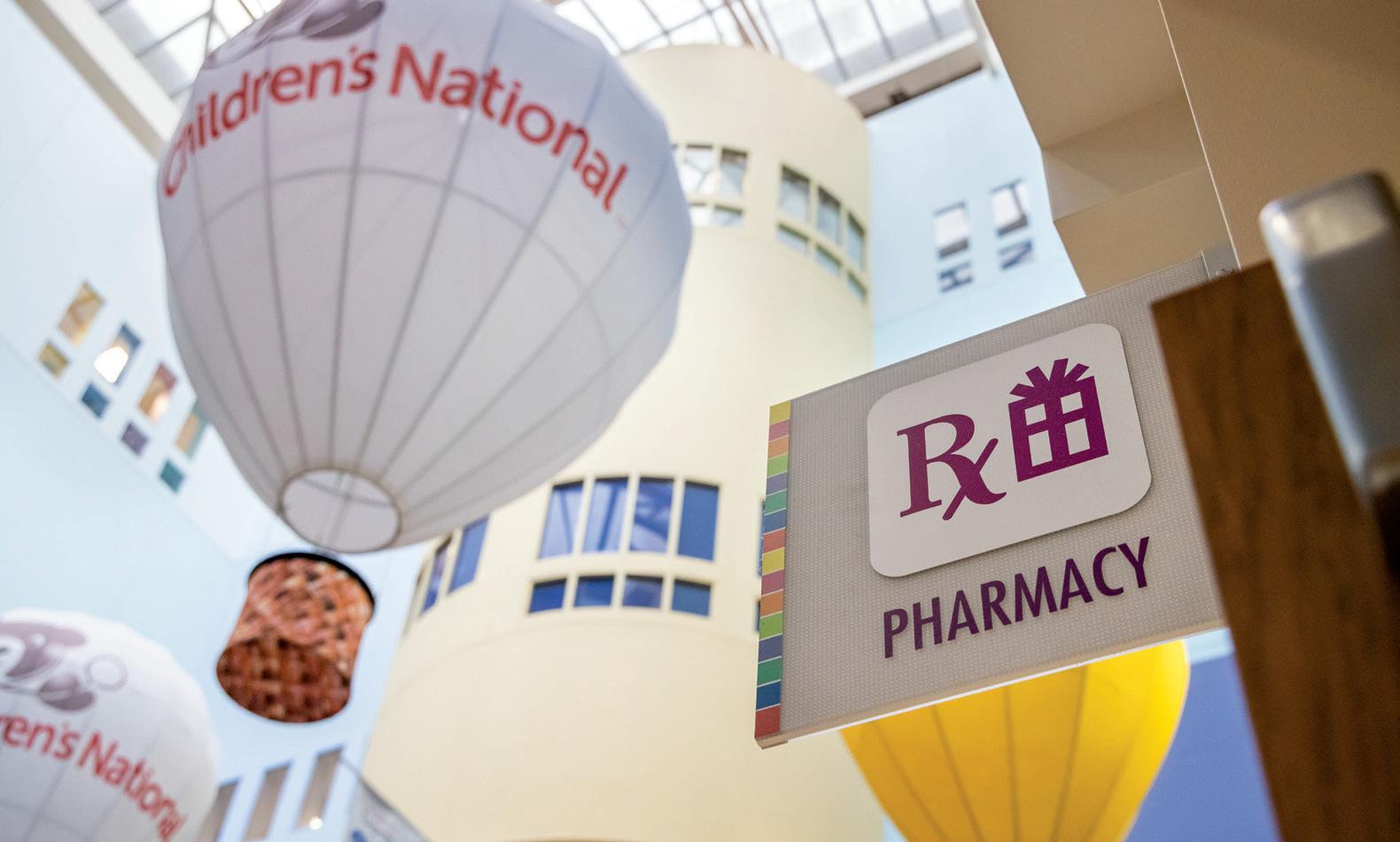
“My experience as a surgeon enables me to understand the daily challenges staff face, then prioritize improvements. On my first day as CEO, I rode the parking shuttle next to a nurse I’d known for a long time. She worked in many different areas of the hospital, including oncology. I asked her what one big thing I could change to help her provide better care. She didn’t hesitate; we needed an on-site pharmacy. She explained that children with cancer often need specialized medicines and outside pharmacies didn’t always get the prescriptions right. If we had a pharmacy, families could pick up medications here along with instructions from our nurses. We opened our pharmacy in 2014.”
“Leadership at Children’s National continues to drive up quality of care and safety. This inspires gratitude from families. It means kids can get on with their lives.”
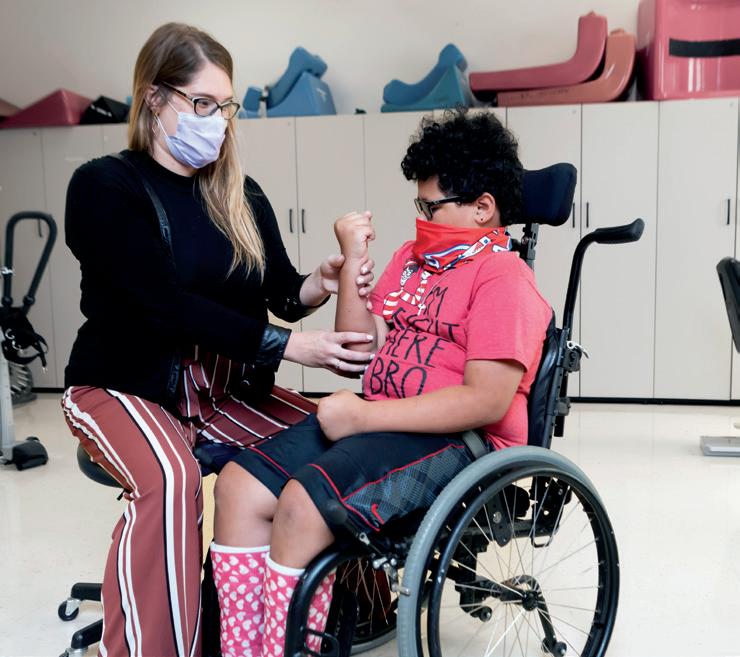
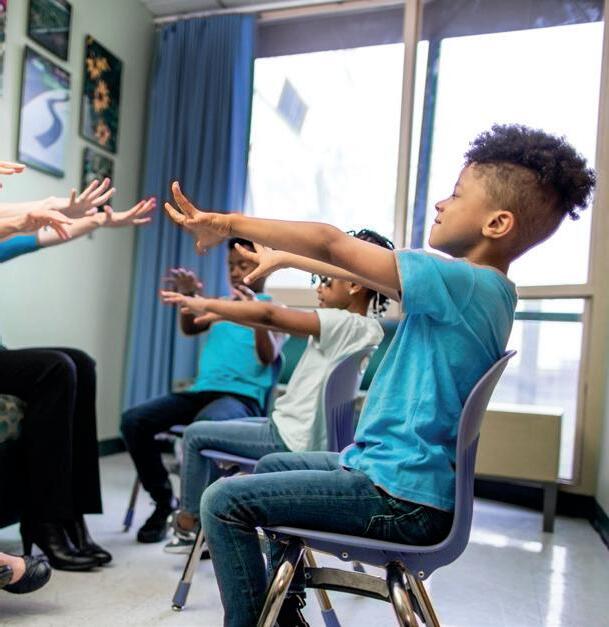
“Generous donors give us the freedom and courage to turn big ideas into action, such as increasing access to mental health care for very young children, especially those who live in under-resourced communities.”
“Children’s National has delivered on a lot of big dreams when it comes to caring for children. There’s still so much more to come.”
— Dr. Kurt Newman
“My surgical practice for years included a small clinic in Upper Marlboro, MD. Having access to care from Children’s National close to home meant so much to the families there. This made a huge impression on me. After I became CEO, we focused on bringing care into neighborhoods with a focus on building the kinds of places we’d like to bring our own children to. We built a major specialty center in Prince George’s County. We also brought world-class facilities to Washington, DC’s Ward 8. Families love the convenience and great care.”
“When people come to the hospital and see all the things we do beyond medical care ― such as art, music and pet therapy ― they get an idea of how we focus on healing the whole child. We even had a pony dressed up as a unicorn visit the Costco Wholesale Atrium.”
“Philanthropy makes it possible for us to recruit the smartest and brightest doctors, nurses and researchers. We find the people with the biggest hearts. Our medical residency program also consistently attracts top applicants who will become the next generation of pediatric leaders. The program has a special focus on recruiting and training residents from underrepresented backgrounds.”
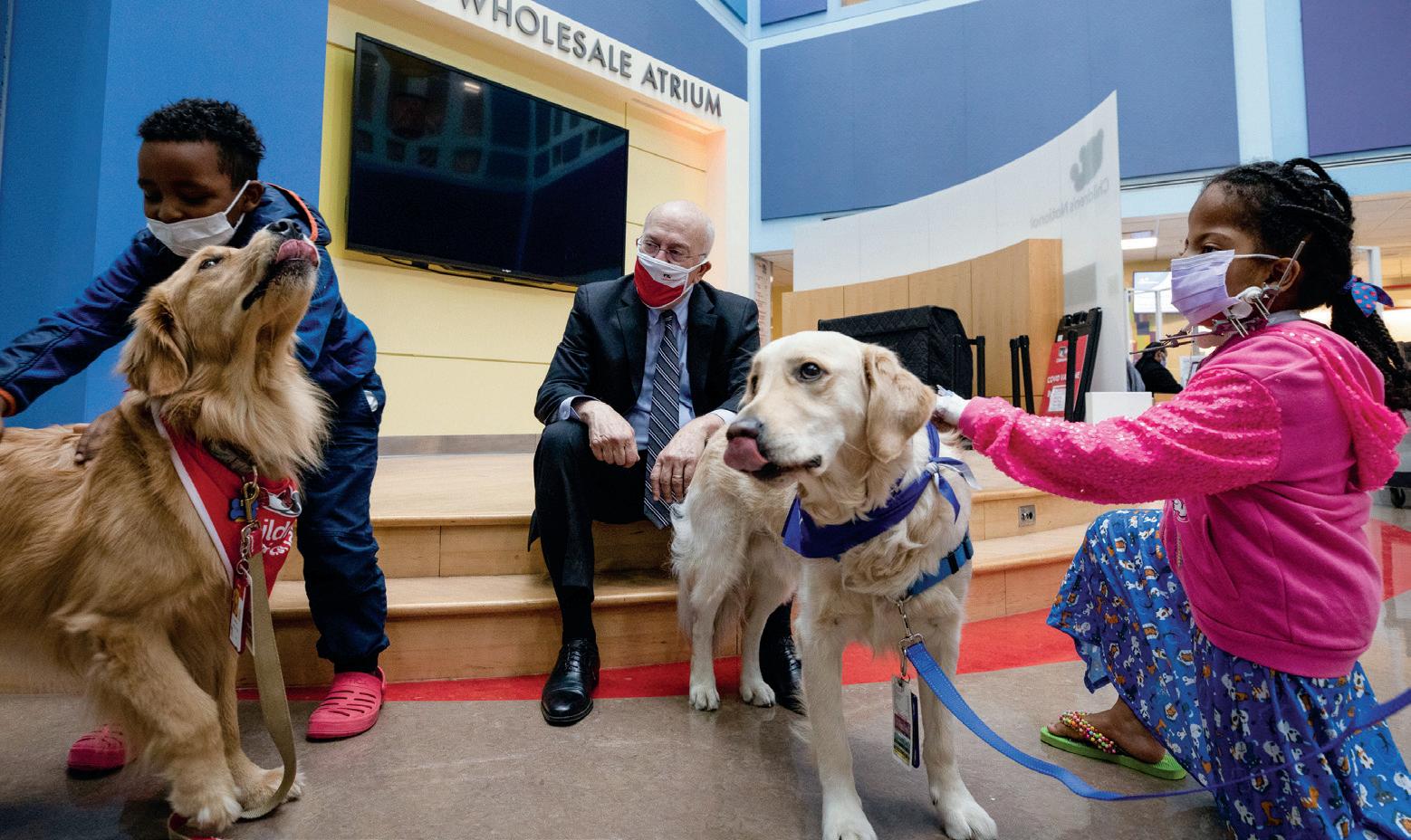
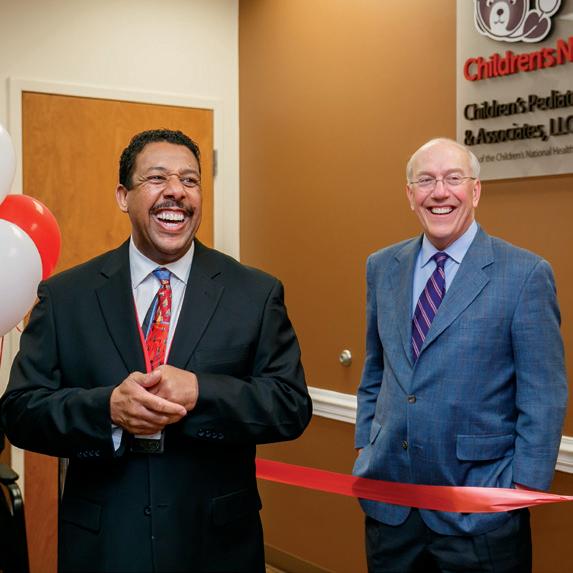
“More than a decade ago, a visionary donor challenged us to imagine how future pediatric surgeries could be more precise, less invasive and pain-free. Children’s National recently performed the first-ever high-intensity focused ultrasound surgery on a young patient with a brain tumor. This successful surgery was a major milestone in fulfilling the promise of the Sheikh Zayed Institute for Pediatric Surgical Innovation. Support from generous donors also enabled us to open our one-of-a-kind launch pad for pediatric breakthroughs in 2021, Children’s National Research & Innovation Campus.”
For Believe magazine’s digital experience please visit childrensnational.org/ believe

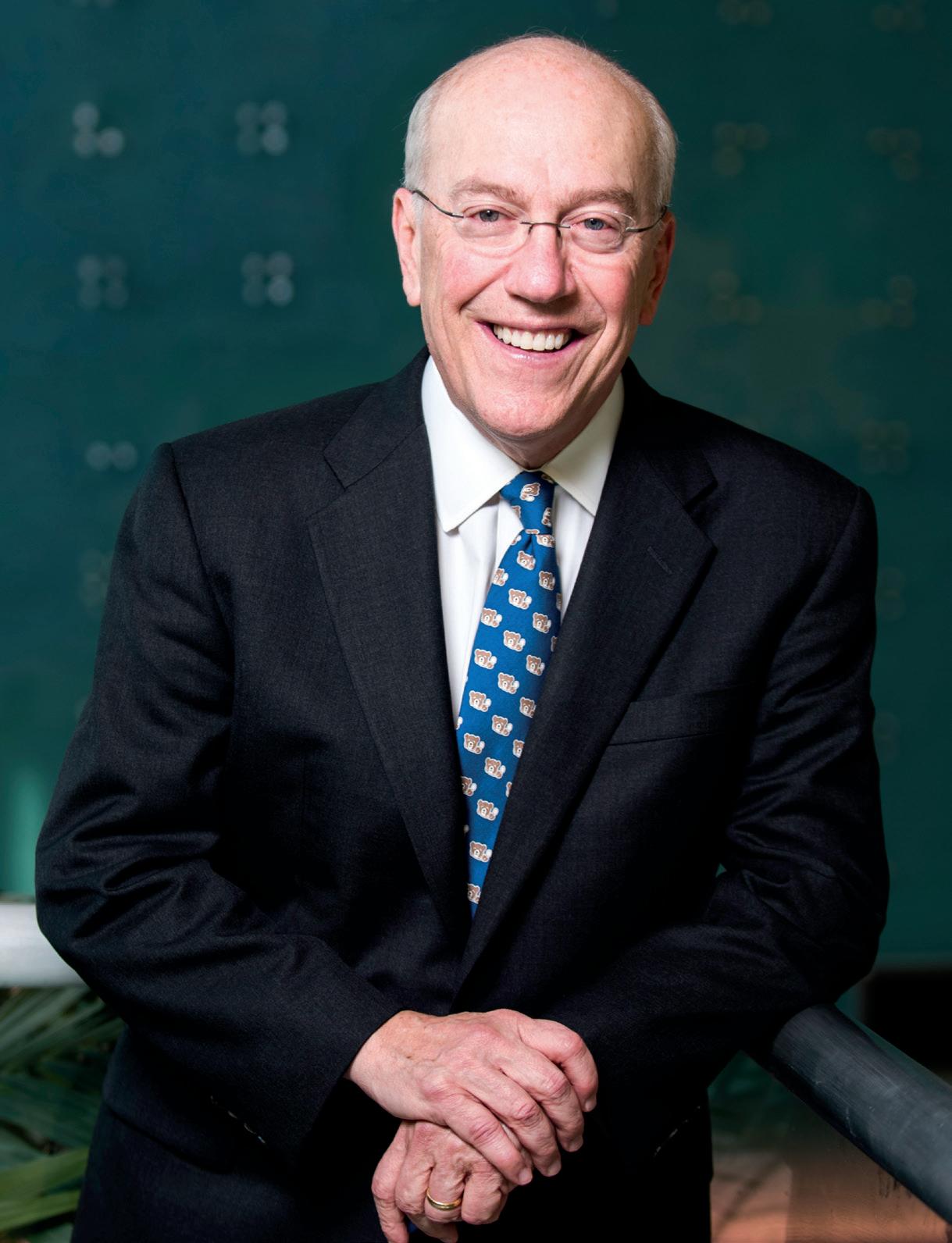
1984
Joins Children’s National as a surgical fellow
2003
Becomes Surgeon-in-Chief & Senior Vice President for the Joseph E. Robert, Jr., Center for Surgical Care
2009
Serves as founding Vice President for the Sheikh Zayed Institute for Pediatric Surgical Innovation
2011
Becomes President & CEO of Children’s National
2017
Publishes memoir, “ Healing Children: A Surgeon’s Stories From the Frontiers of Pediatric Medicine”
2020
Appoints the hospital’s inaugural Chief Diversity Officer to advance diversity, equity & inclusion
2021
Opens the Children’s National Research & Innovation Campus
Two visionary leaders bring care and resources directly to families
In 2021, the UnitedHealth Group and its philanthropic arm, the United Health Foundation, awarded Children’s National a three-year, $3.4 million grant. The new partnership increases health care access for children who experience some of Washington, D.C.’s most significant health inequities.
It fuels a unique program that travels directly to kids in the Wards 7 and 8 neighborhoods of Southeast D.C. to improve health and academic outcomes. Mobile Health Program units from Children’s National THEARC, a medical hub with primary care and specialty services in Anacostia, deliver care on the road.
Community health workers, school nurses and doctors on the mobile units use technology and school absence data to find kids who need care. Providers then link families to resources that address issues like food insecurity, job instability and Wi-Fi access. The hospital works to remove barriers for children. As they grow stronger, so do their communities.
We recently spoke with Dr. Hope Rhodes, Medical Director of Children’s National THEARC and its Mobile Health Program and Dr. Margaret-Mary Wilson, Executive Vice President and Chief Medical Officer of UnitedHealth Group, the country’s largest health insurer. They offer insights on their partnership to move Washington, D.C., closer to health equity.
We edited this interview for clarity and brevity.

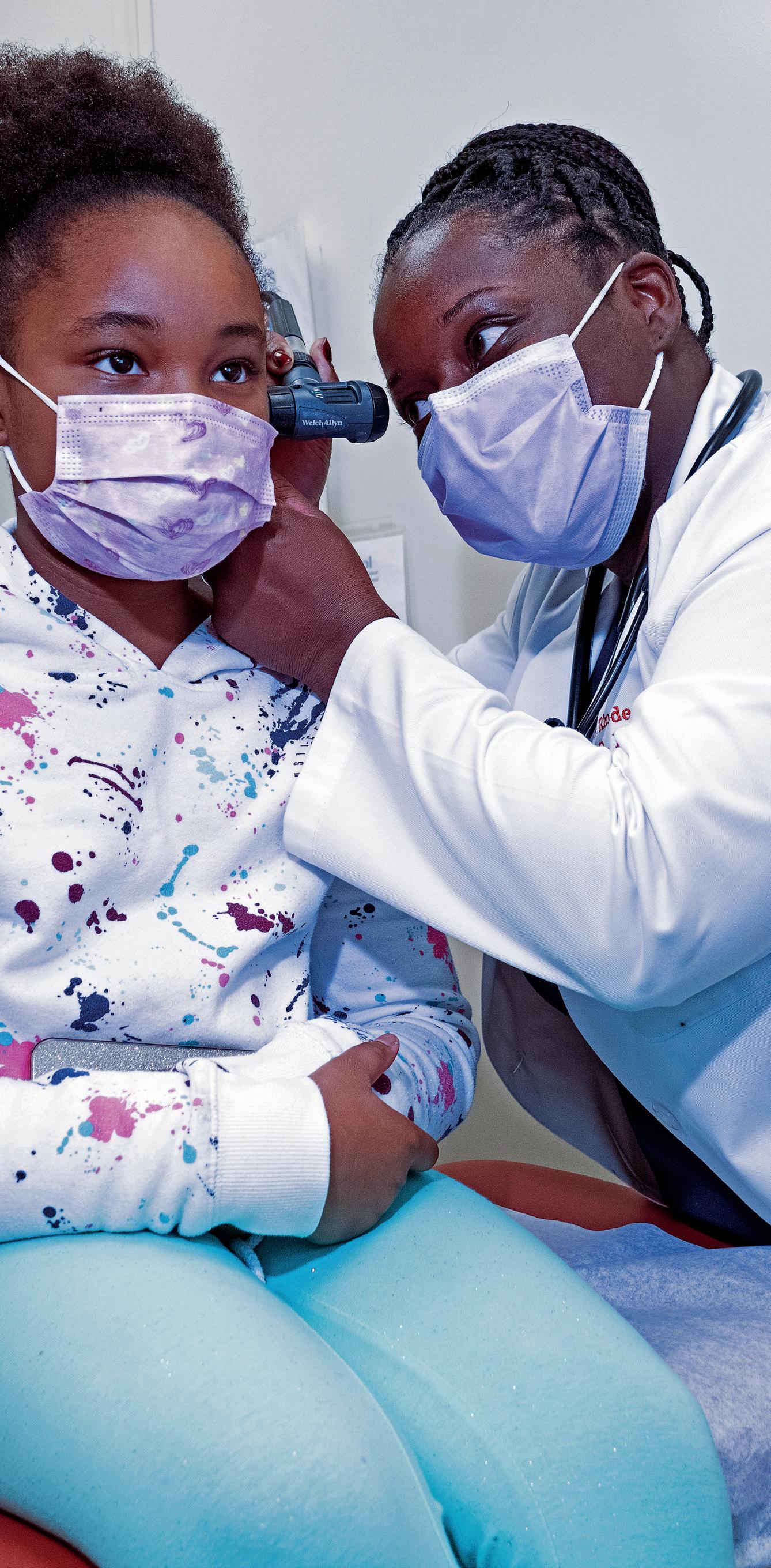


Dr. Rhodes: In the shadow of the nation’s capital, there are children who do not have access to some of the basic things of life. There are persistent health inequities in Wards 7 and 8 that primarily affect people of color. But there’s a lot of great work happening. Children’s National THEARC and the Mobile Health Program are a part of that.
Thanks to the United Health Foundation, we’re creating intentional community partnerships — with schools, faith-based organizations, early childhood development centers — so that we can abate and address the inequities we see. We are bringing the comprehensive care found in our fixed locations to the places families live, learn, work and play.
Dr. Wilson: At UnitedHealth Group and United Health Foundation, we’re committed to supporting innovative, evidence-based programs that help the health system work better for everyone. Children’s National brought forward a practical, pragmatic and real solution that helps address children’s health inequities in D.C. The approach brings together partners to leverage technology and data analytics to meaningfully transform health outcomes. It addresses school absenteeism during formative educational years when it’s absolutely critical to intervene. This demonstrates the dedication of Children’s National and clinicians like Dr. Rhodes to serve communities and meet children and families where they are, in their normal course of life.
Dr. Rhodes: The Children’s National Mobile Health Program has provided care to kids for more than 20 years. Support from the United Health Foundation connects us to community organizations. That extends our reach to more kids. We don’t know where every child is or what their health needs are. But early childhood development centers know that information. Schools know which students are behind on immunizations.
The program’s community health workers help us identify needs and link families to critical resources — access to fresh fruits and vegetables, a safe place to play, heat to warm houses. This has a profound impact on the kids we’re serving and it’s all possible thanks to the United Health Foundation.
Dr. Wilson: Health is simply life. Managing and advancing our health must occur within the course of life. Before COVID-19, we had to travel to a location to seek health care. We disrupted our normal course of life, waited in a queue, saw a provider, then returned to our lives. With the pandemic, we could no longer do that.
There are so many things we can manage in less restrictive environments. Virtual or home-based care brings care to patients. It eliminates barriers between them and their providers. They can engage with health in the comfort and the natural environment of their lives. This is what Dr. Rhodes and this program do by bringing care to children in a mobile form.
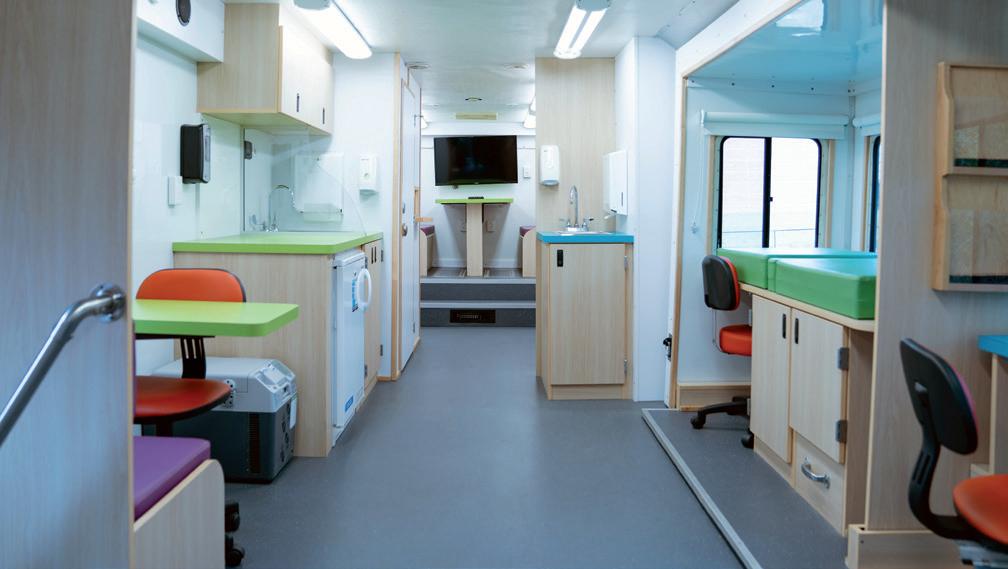
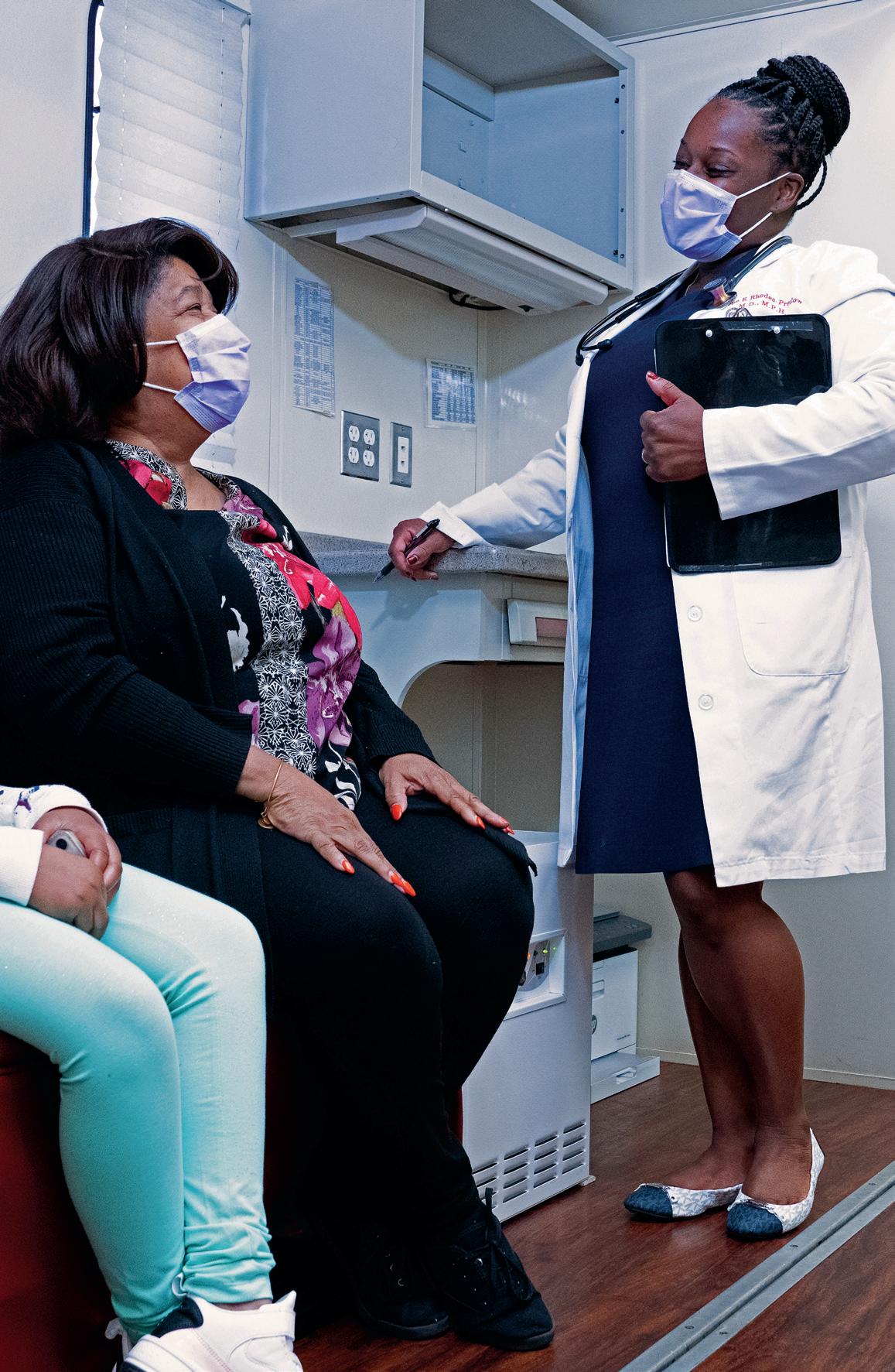
“From 2017 to 2019, we reached 200 kids with our Mobile Health Program. With resources from the United Health Foundation, we cared for more than 900 kids in the past 17 months.”
— Dr.
What role does a community’s health play in the well-being of its citizens?
Dr. Rhodes: We want to hear from the families we are reaching. Our initial surveys show that the vast majority feel the Mobile Health Program’s care is exceptional, efficient and safe. Our next step is to ask our community partners for input to make this the best program possible. What patient populations are they reaching? How does it overlap with who we’re reaching now?
The possibilities of what could be if every child had access to care inspires me. I take every opportunity to scoot my seat over to invite people to the table to tell their own story.
Dr. Wilson: A person’s life course, health and education can rise or fall depending on a community’s strength and its investment in them. If you place a healthy individual in a community that is unhealthy, you end up with a sick individual all over again.
Resources like the United Health Foundation’s annual America’s Health Rankings report can help drive conversations among policymakers, health experts, clinicians and other public health leaders. But it is important for us to engage communities to understand and learn more about them if we are to truly lean into health.
Mobile Health Program doctors screen children and link families to needed mental health and behavioral care at our brick-and-mortar locations. Whole Bear Care offers kids psychology services right down the hall from their pediatricians. Half of Children’s National care providers identify as people of color, reflecting the hospital’s commitment to represent and care for the diverse Washington, D.C., community.
“I keep a person and their valuable community as my beacon. As we think through health care solutions, I ask myself: Does that work for the faces I see before me?”
— Dr. Margaret-Mary Wilson, UnitedHealth Group

Mark Batshaw, M.D., knows something about the importance of never giving up on children. His life embodies this principle. “For me, just getting through elementary school was a major achievement,” he says.
ADHD and dyslexia made his school life a struggle. He could not read until third grade. He squirmed in his seat and sometimes wandered around his classrooms. He would cry because he didn’t want to go to school, but his mother, Rachel, made sure he did. “The idea that I would ever become a doctor, then an investigator and then a leader in pediatrics was not part of my thinking,” he says. “My professional life has been filled with surprises.”
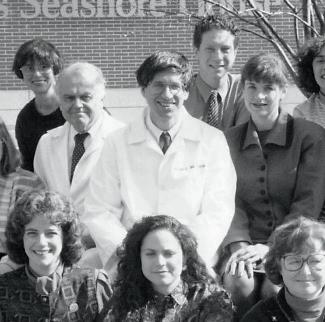

A deeply personal connection to children’s health helped Dr. Mark Batshaw transform Children’s National into a research powerhouse. His family inspires him to build on this legacy.
Through hard work and family support, Dr. Batshaw learned to channel his ADHD and overcome his learning disabilities. His academic performance blossomed in high school, and he took an early interest in medicine. He attended medical school at the University of Chicago, where he met Karen, his wife of more than 50 years. When Karen experienced fetal distress during the birth of the couple’s first child, he prayed. “I sort of promised that if my daughter was ok, that I would take care of children who are not as fortunate,” he says. “She turned out to be ok and I became a developmental pediatrician. She grew up to be a special ed teacher and school psychologist.”

The idea that I would ever become a doctor, then an investigator and then a leader in pediatrics was not part of my thinking.”
― Dr. Mark Batshaw

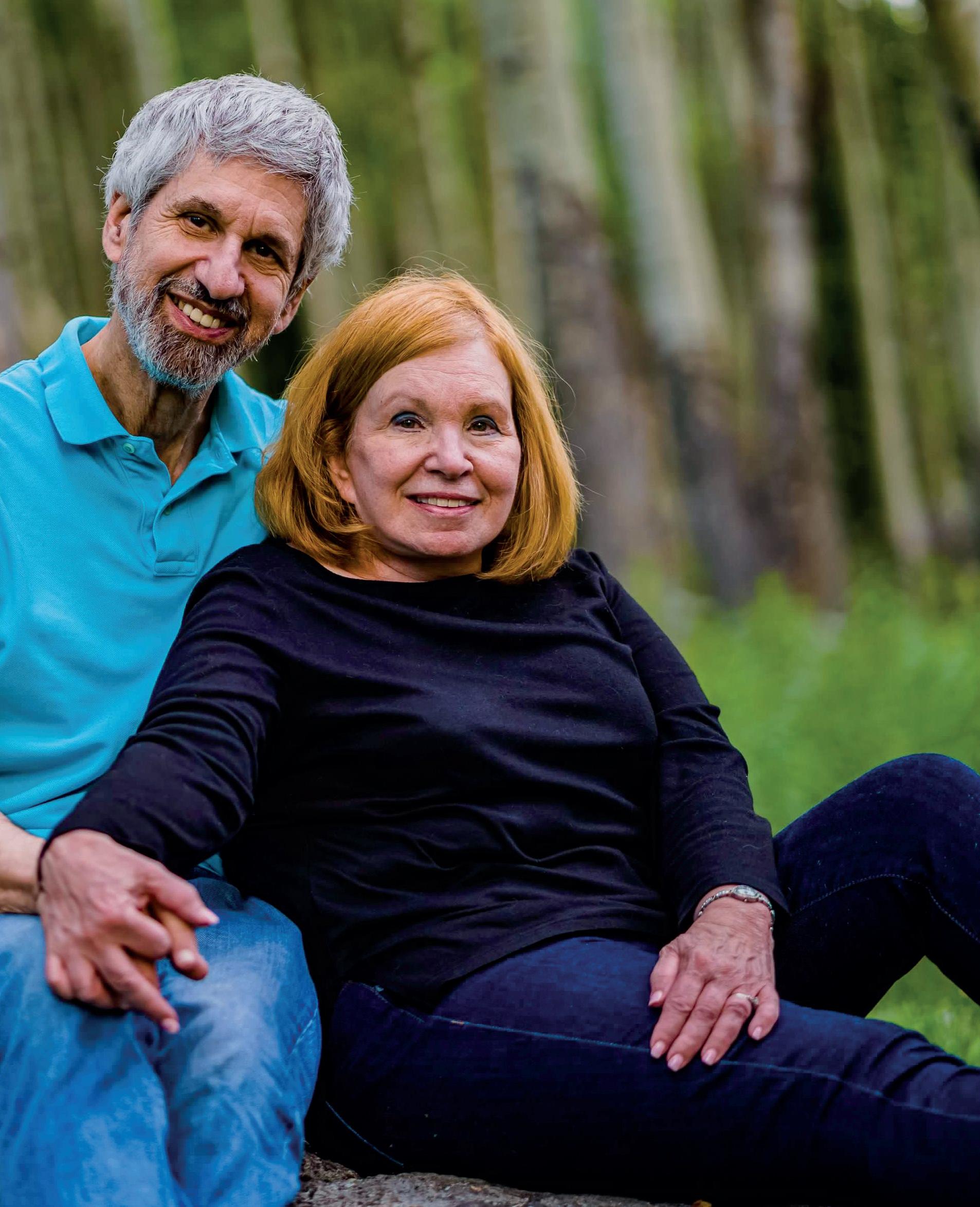
The Batshaw family’s generosity fuels scientific leadership.
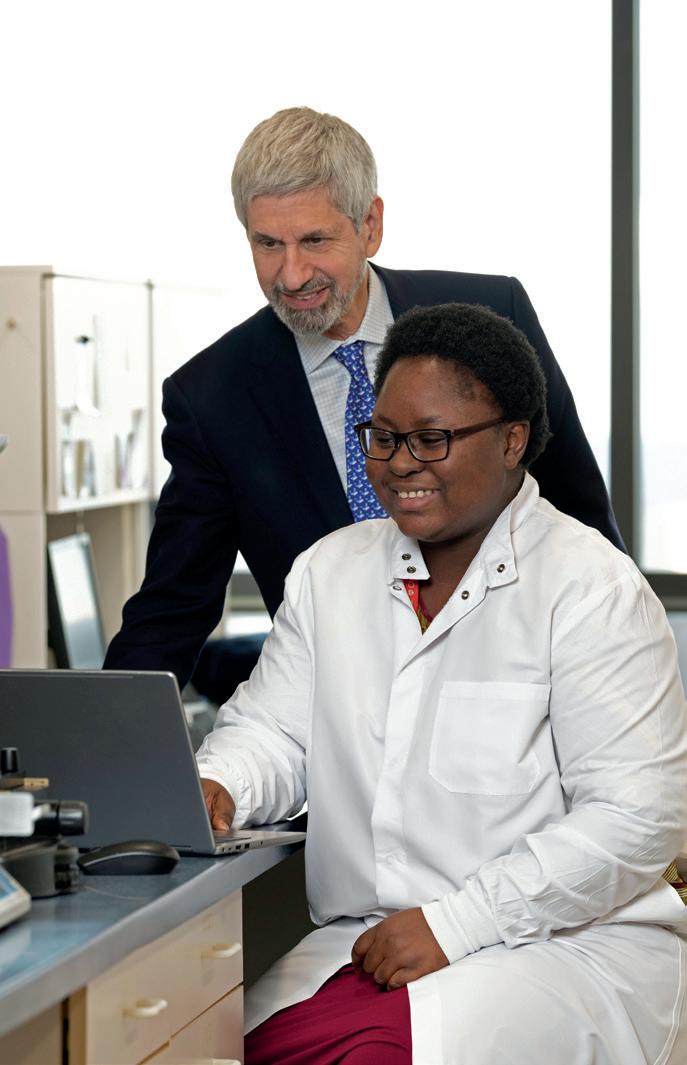

Dr. Batshaw’s promise led to a pediatric residency at the Hospital for Sick Children in Toronto and a fellowship in child development at Johns Hopkins University. In Baltimore, his research career began almost by chance. He found himself treating a 13-year-old girl experiencing lethargy, vomiting and occasional comas. Through medical detective work, he determined the patient had a urea cycle disorder (UCD). This deadly rare genetic disease disrupts the body’s ability to metabolize protein and can lead to toxic ammonia buildup that damages the brain. UCD had no treatment at the time.
Coincidentally, Dr. Batshaw attended a lecture by one of the university’s researchers about the potential use of keto acids to treat conditions that impact the kidneys, such as UCD. He and that lecturer, Dr. Saul Brusilow, started working together on novel UCD therapies and published their work on the first known treatment in 1975. Dr. Batshaw has investigated and pio-
neered treatments for the condition ever since.
Today, Dr. Batshaw is Senior Investigator in the Center for Genetic Medicine Research at Children’s National and one of the world’s leading pediatric scientists. He helped develop the Children’s National Research Institute, which he led from 1998 to 2021 — a period when the hospital became one of America’s top pediatric research institutions. His textbook, Children With Disabilities, is a perennial bestseller, now in its eighth edition. His entire family, including one son who shares his own experiences with ADHD, contributes to each new edition.
Life has taught Dr. Batshaw about the power of resiliency. The legacy he is building at Children’s National reflects his personal dedication to patients and families. He considers the new Children’s National Research & Innovation Campus the capstone of this legacy. It represents one of America’s boldest investments in children’s health — a place for unprecedented collaborations for pediatric breakthroughs.
Dr. Batshaw’s legacy includes a lifetime philanthropic commitment of $1 million to the hospital. He learned philanthropy’s value at a young age. His father, Manuel Batshaw, known as the architect of Montreal’s Jewish community, was a Canadian social worker and fundraiser for the Jewish Federation.
“My father always used to tell me that people give to people, not just causes,” Dr. Batshaw says. The family kept a tzedakah box, a traditional Jewish container for gifts to those in need. “I knew how happy it made me feel to fill the tzedakah box.”
The Batshaw family’s generosity fuels scientific leadership. Their fund makes strategic investments in new lines of research. Key priorities include launching the careers of young investigators,
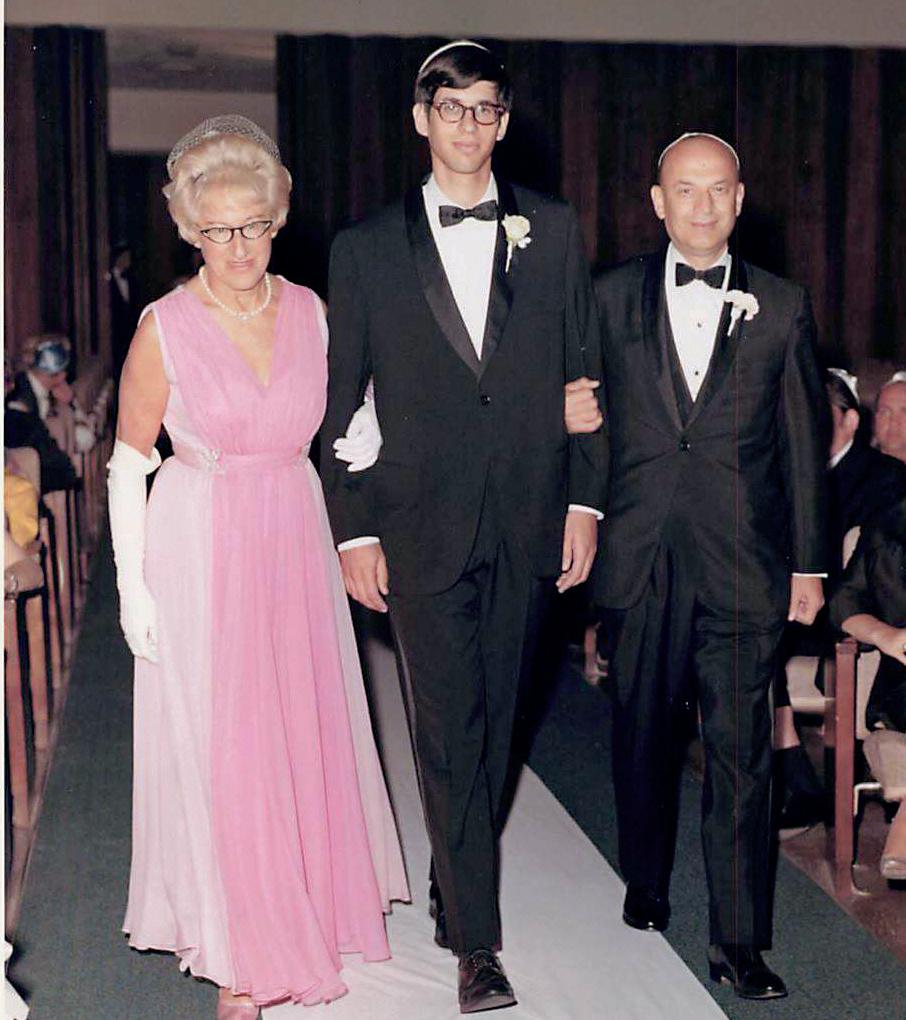
particularly those from communities or backgrounds whose ideas and experiences are underrepresented in the sciences. The family is making gifts toward their overall philanthropic commitment and plans to make an estate gift to meet any remaining balance toward this goal.
Over the years, Dr. Batshaw has worked with many families who share his vision of philanthropy’s transformative power. He forged relationships with UCD families who donated more than $20 million in support of research. Their generosity helped the hospital leverage more than $30 million in additional federal grants. This public-private partnership led to his creation of the UCD Consortium, which pioneered a new era of rare disease research. This has yielded a dramatic decrease in deaths from UCD and several new FDA-approved treatments that significantly improved patient care.
“Philanthropy lets you dream and have those dreams come true,” Dr. Batshaw says. “It’s also a way of bringing in the community. Donors make major contributions to their community. Their resources make a better tomorrow by allowing research to improve care and the health and well-being of children.”
“My father always used to tell me that people give to people, not just causes.”
― Dr. Mark Batshaw
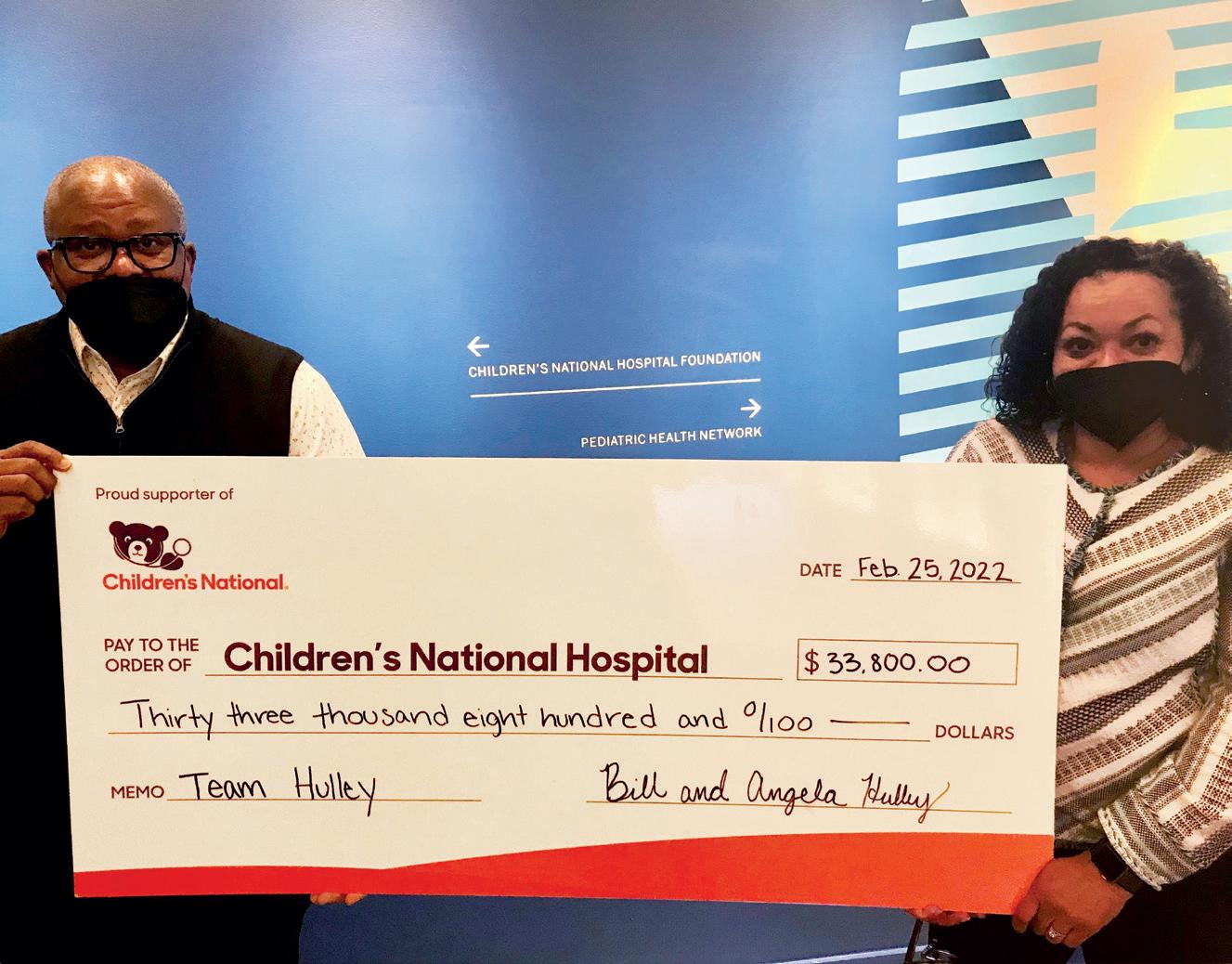
Bill and Angela Hulley raised more than $33,000 last year for Children’s National.
When Bill and Angela Hulley worshipped at Mount Sinai Baptist Church in Washington, D.C., they encouraged the congregation to make Children’s National a beneficiary of the church’s annual golf tournament. “We learned that we could contribute to the Fund for Every Child that helps pay medical benefits for uninsured children,” says Bill. This cause aligned with their faith and values.
The couple are among the many supporters in our community who organize Do-It-Yourself (DIY) fundraisers to benefit patients and families at Children’s National. When the Hulleys joined a new congregation, Zion Church of Lanham, MD, they brought their tournament, generosity and advocacy for children’s health with them. It led to outstanding results. “We enjoy our partnership with Children’s National and appreciate the opportunity to contribute to the health and wellness of patients,” adds Bill.
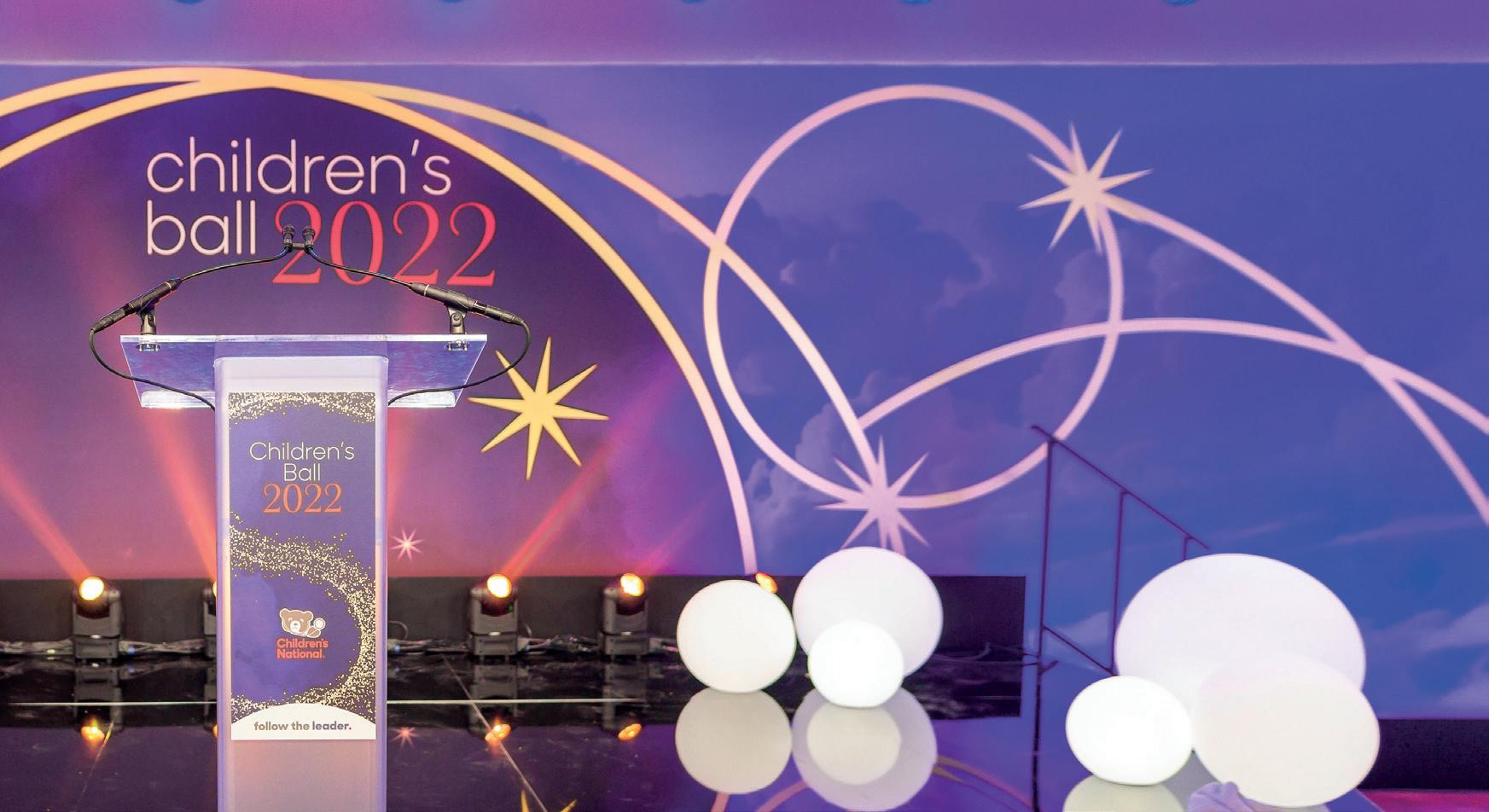

More than 1,100 guests gathered for the Children’s Ball on April 2 at The John F. Kennedy Center for the Performing Arts. This gala to celebrate the future of children’s health raised nearly $3.9 million for Children’s National. Ball Co-Chairs Amy & Bret Baier (emcee) and Jimmy & Jennifer Reyes provided leadership. The event featured a special musical performance by Sheryl Crow.
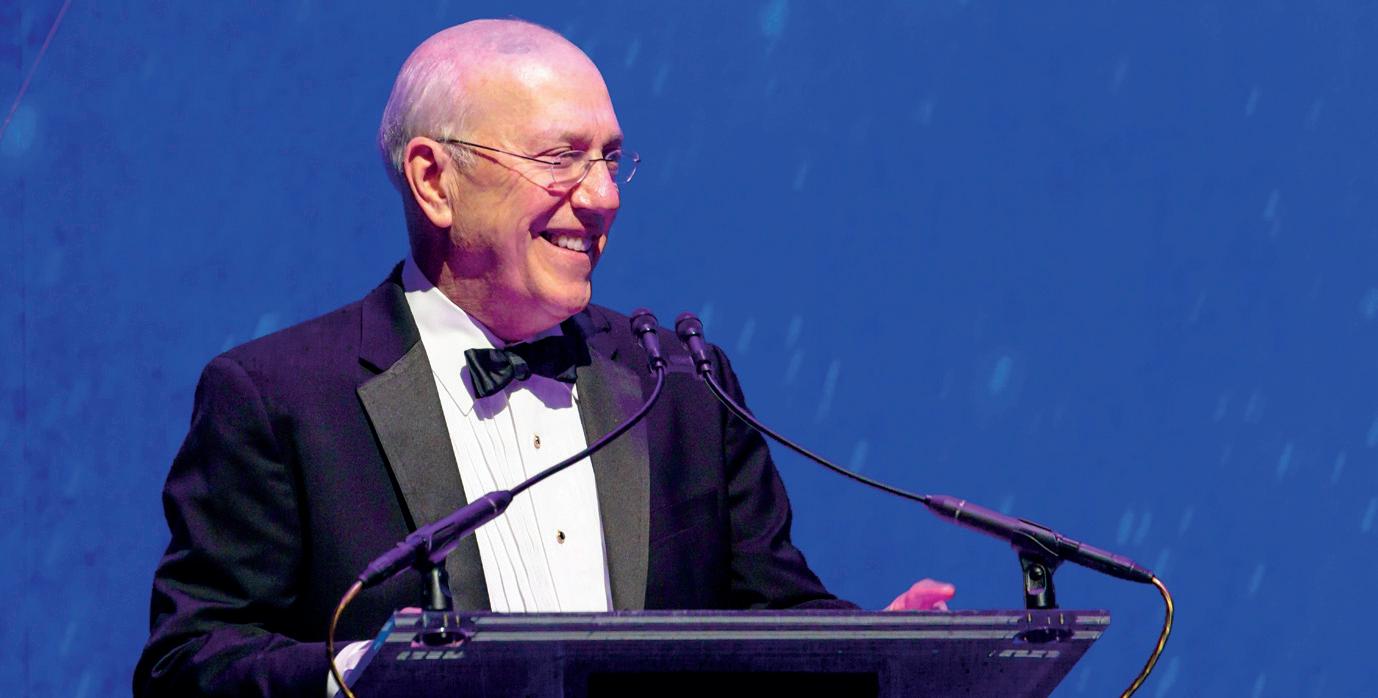

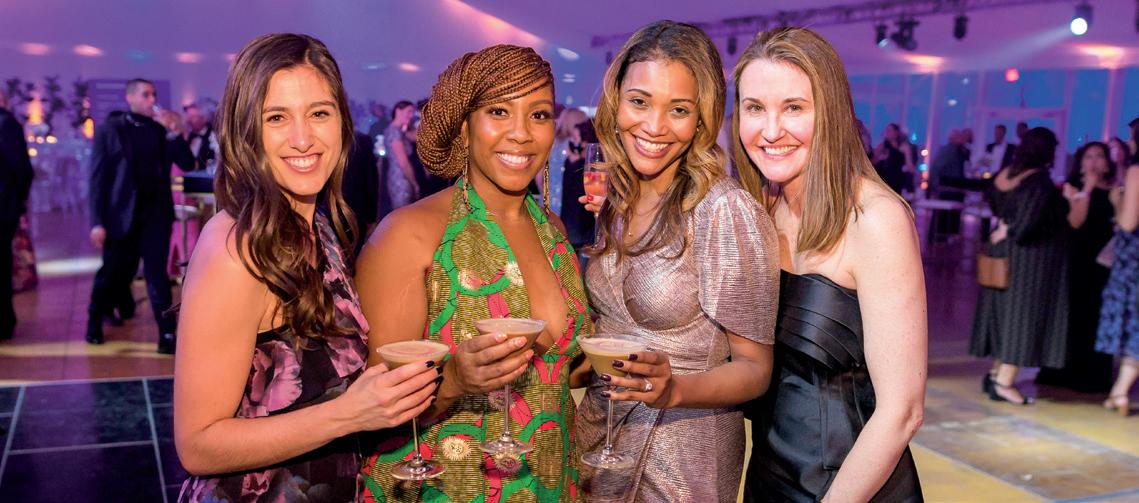
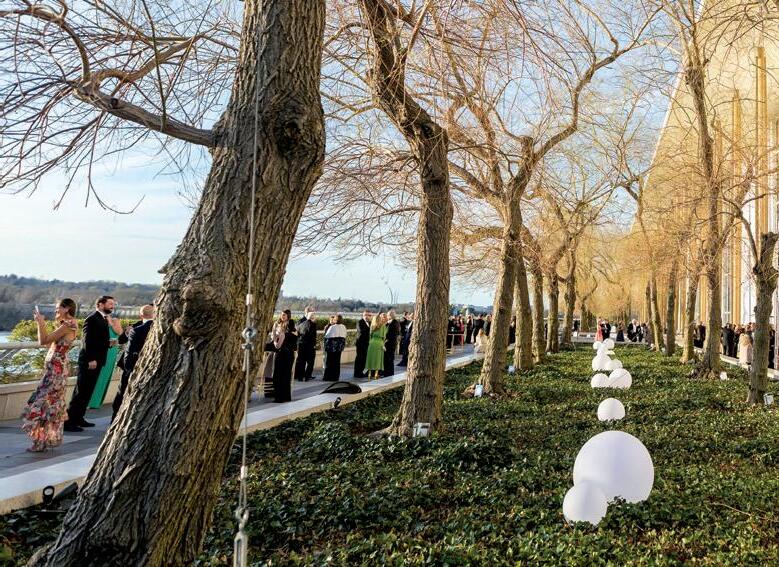



Amari, age 15, used acrylics and glitter to reframe his world during the pandemic. The former Children’s National patient with autism was thrilled when the hospital’s Young Expression Gallery featured his bright creations for eight months. Amari’s passion for art ignited an Instagram business he hopes will help pay for college or independent living someday. It also created many positive social connections. “I’m really thankful for the journey he’s been on,” says his mom, Anya. “He started creating his art because he was stuck at home during the pandemic; but without it, we wouldn’t have built the community he has today.”
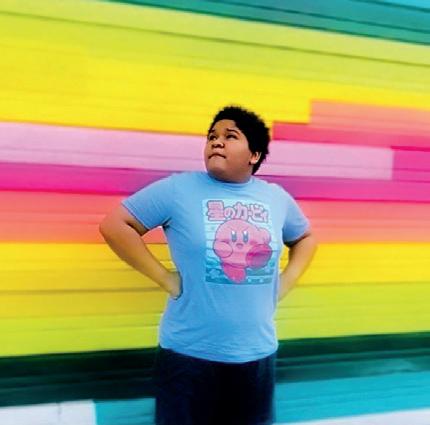
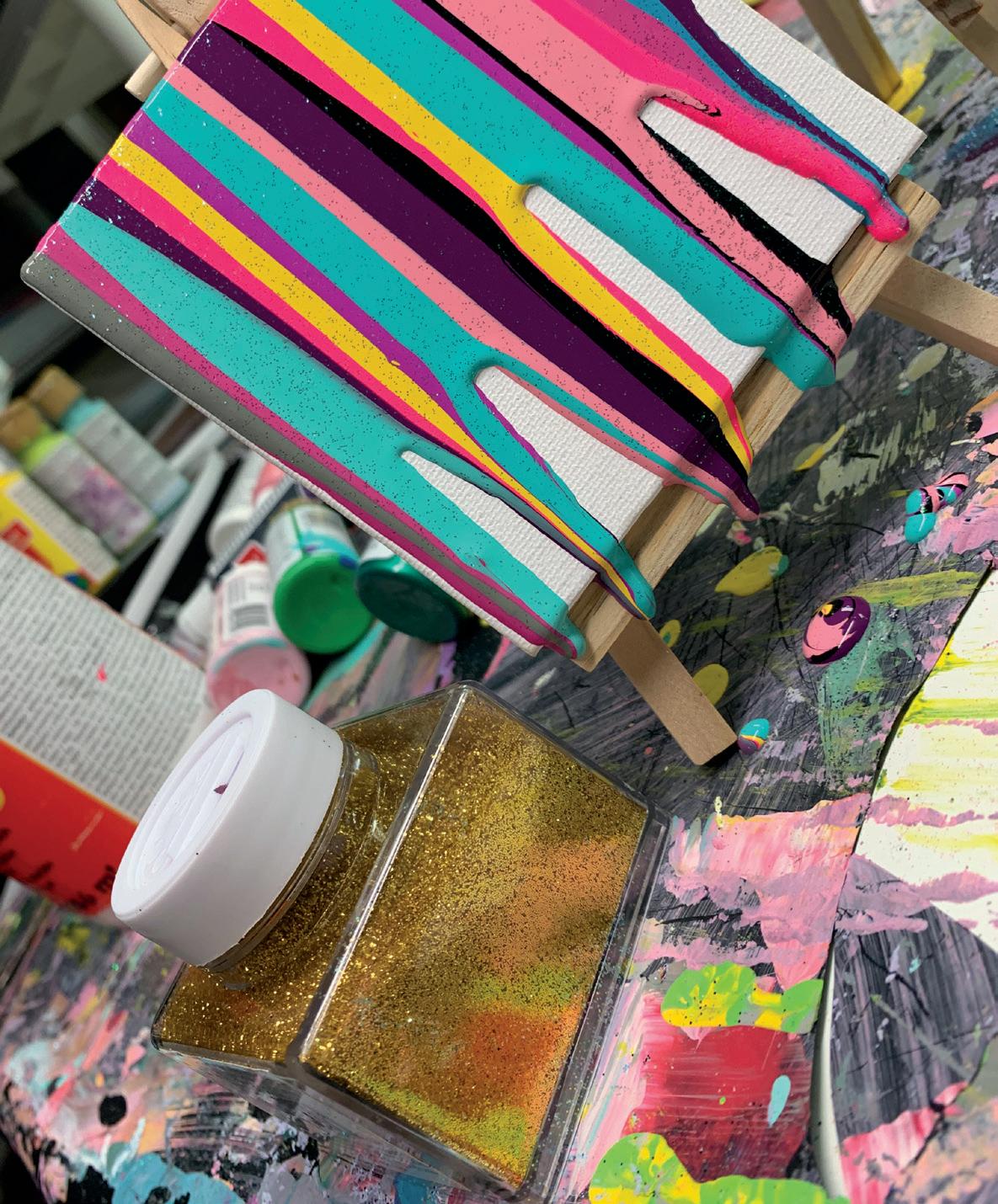
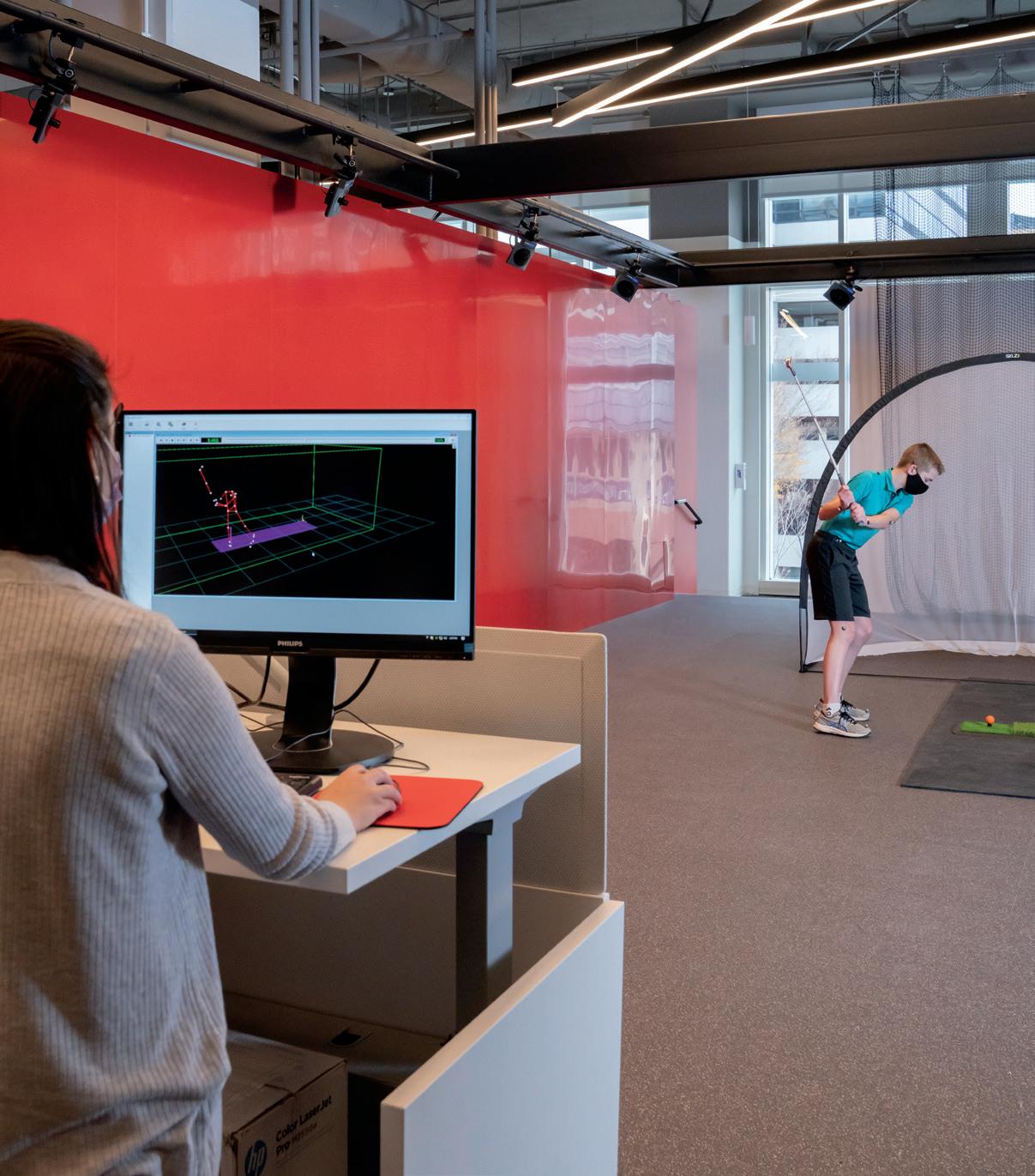
Motion capture technology in the innovative Sports Performance Training Lab at Children's National, is changing the game for young athletes. The lab, located in our new Fight For Children Sports Medicine Center, uses state-of-the-art 3-D motion analysis to help kids improve sports performance and prevent injury through targeted treatment and performance recommendations. With resiliency, kids can confidently play, grow and excel.
Learn more about the Fight For Children Sports Medicine Center childrensnational.org/believe
Children’s National Hospital Executive Leadership
Kurt Newman, M.D. President & CEO
Donna Anthony, MPH Vice President & Chief of Staff
Nathaniel Beers, M.D., MPA, FAAP President, HSC Health Care System
Catherine Codispoti, MHA
Executive Vice President & Chief People Officer
Denice Cora-Bramble, M.D., MBA Chief Diversity Officer
Jeffrey Dome, M.D., Ph.D.
Senior Vice President, Center for Cancer and Blood Disorders Chief, Division of Oncology
Vittorio Gallo, Ph.D.
Interim Chief Academic Officer
Interim Director, Children’s National Research Institute
Kathleen Gorman, MSN., R.N., FAAN
Executive Vice President of Patient Care Services & Chief Operating Officer
Mary Anne Hilliard, Esq., R.N.
Executive Vice President & Chief Legal Officer
Aldwin Lindsay, MBA
Executive Vice President & Chief Financial Officer
Matt MacVey, MBA
Executive Vice President & Chief Information Officer
DeAnn Aston Marshall, MHA
President, Children’s National Hospital Foundation
Michelle McGuire, MBA
Executive Vice President & Chief Strategy Officer Vice President of International Affairs
Roger Packer, M.D.
Senior Vice President, Center for Neuroscience & Behavioral Medicine
Anthony Sandler, M.D.
Senior Vice President & Surgeon-in-Chief, Joseph E. Robert Jr., Center for Surgical Care Director, Sheikh Zayed Institute for Pediatric Surgical Innovation
Linda Talley, M.S., R.N., NE-BC, FAAN
Senior Vice President & Chief Nursing Officer
Charles Weinstein, Esq.
Executive Vice President & Chief Real Estate and Facilities Officer
David L. Wessel, M.D.
Executive Vice President, Chief Medical Officer & Physician-In-Chief
Children’s National Hospital Foundation Executive Leadership
DeAnn Aston Marshall, MHA President
Amy Boger
Chief of Staff
Julie Butler Vice President
Shelley Cooke
Associate Vice President, Major Gifts
Armin Doroudian
Associate Vice President, Business Intelligence and Data Analytics
Amy Hauser
Associate Vice President, Annual and Planned Giving
Jessica Miley Chief Operating Officer
Tin Pham
Associate Vice President, Finance and Donor Data
Leslie Schrader Chief Marketing Officer
Children’s National Board of Directors
Horacio Rozanski Chair
Gregory O’Dell Vice Chair
Ramu Potarazu
Secretary-Treasurer
Directors
Amy Baier
Jonca Bull, M.D.
Toni Bush
Robert “Bob” Flanagan
Amy Freeman
Wendy Goldberg
Michael Jones
Barbara Kunz
Jason Levien
Carrie Marriott
Linda Rabbitt
Jimmy Reyes
Mark Rouchard
Laura Unger
Caroline Van Vleck, M.D.
Michael Ward
President & CEO: Kurt Newman, M.D.
Children’s National Hospital Foundation Board of Directors
Amy Baier Chair
Mae Grennan Vice Chair
Directors
Brigg Bunker
Jean-Marie Fernandez
Thomas Lloyd
Carrie Marriott
Jimmy Reyes
Lauren Talarico-Cohen, DVM
President & CEO: Kurt Newman, M.D.
Children’s National Board Chair: Horacio Rozanski
10TH Get ready! Saturday, Oct. 15, 2022
Join us at Freedom Plaza in Washington, D.C., or virtually, from wherever you are.
This annual event unites our community to raise funds for world-class pediatric care and research at Children’s National. The 5K run/walk and Kids Dash will support follow the leader, the hospital’s comprehensive campaign to improve the health and well-being of children in our community and beyond.
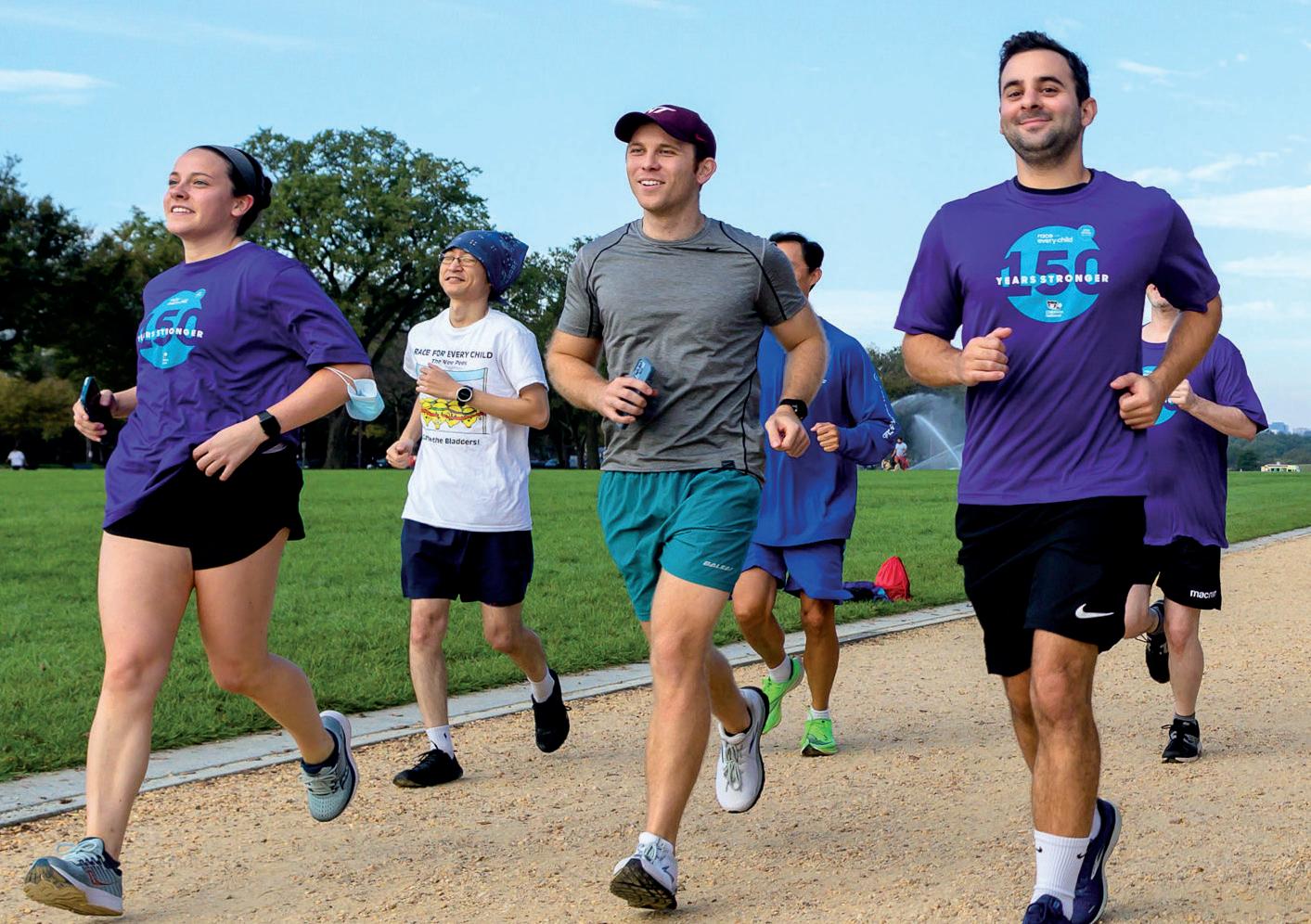
2,000 PARTICIPANTS
Last year, more than FROM +
27 TO HELP KIDS GROW UP STRONGER
3 COUNTRIES RAISED $1.6 MILLION STATES
“I ran for my child, Alice, who never gives up and inspires me to believe that anything is possible. She had multiple brain surgeries but now lives a normal life because of Children’s National!”
― Fabiana S., Rockville, MD